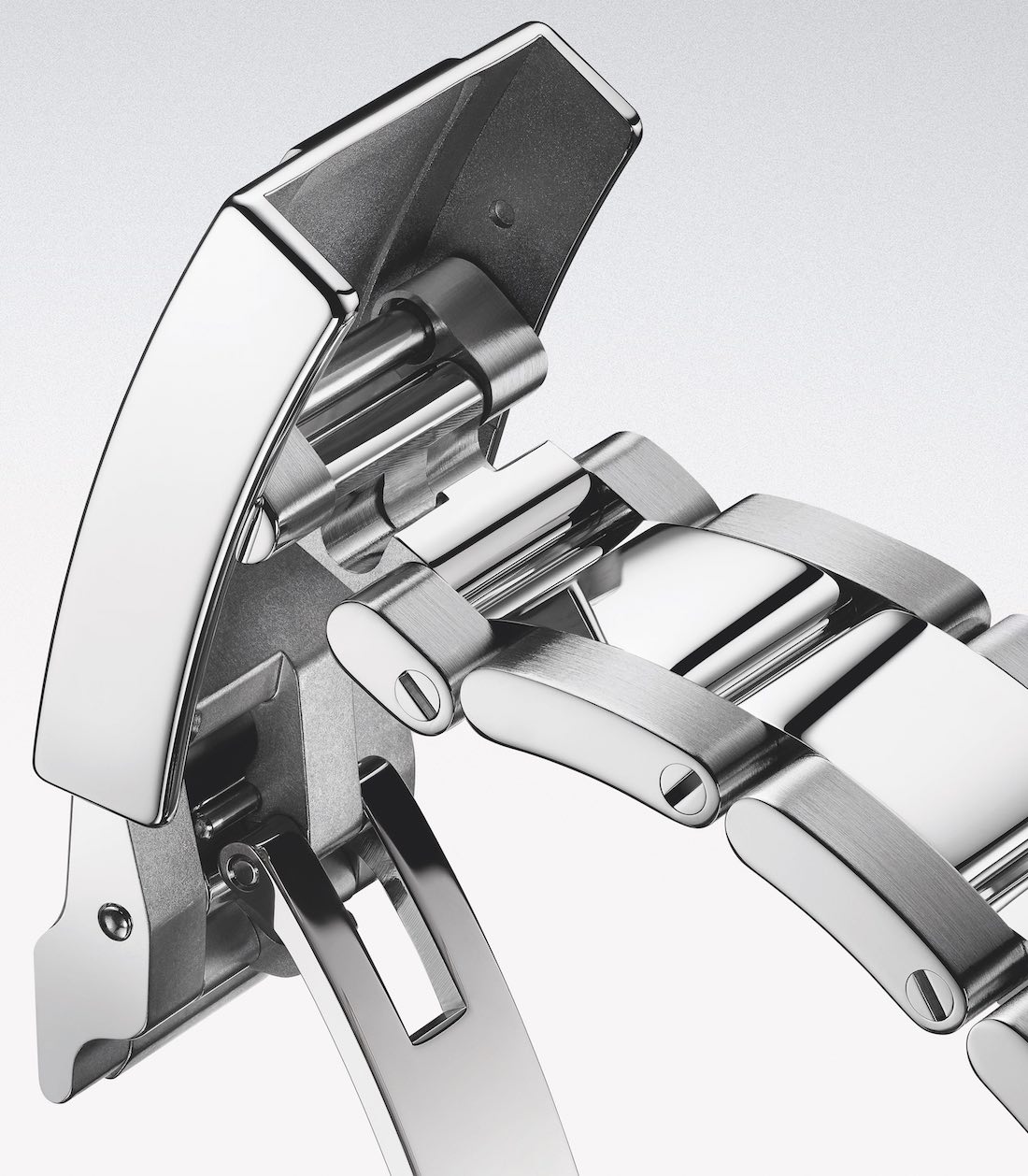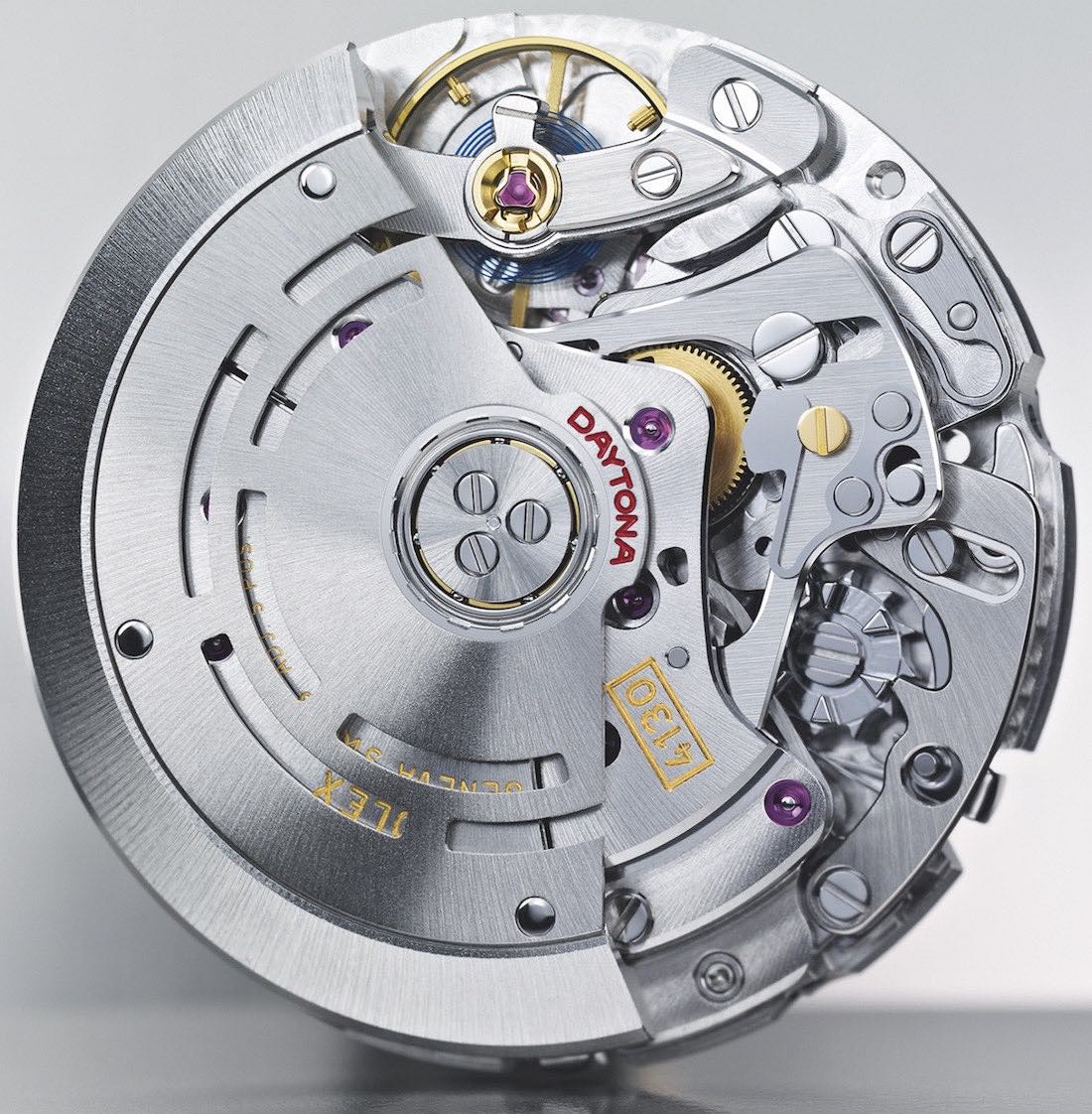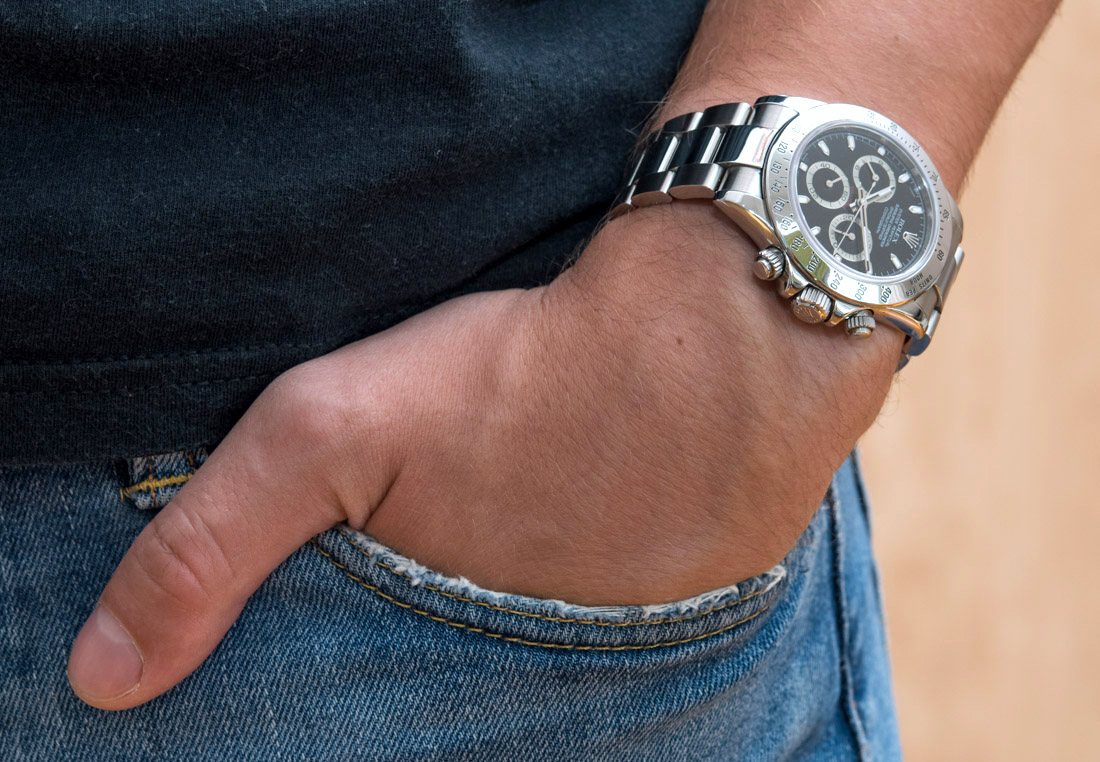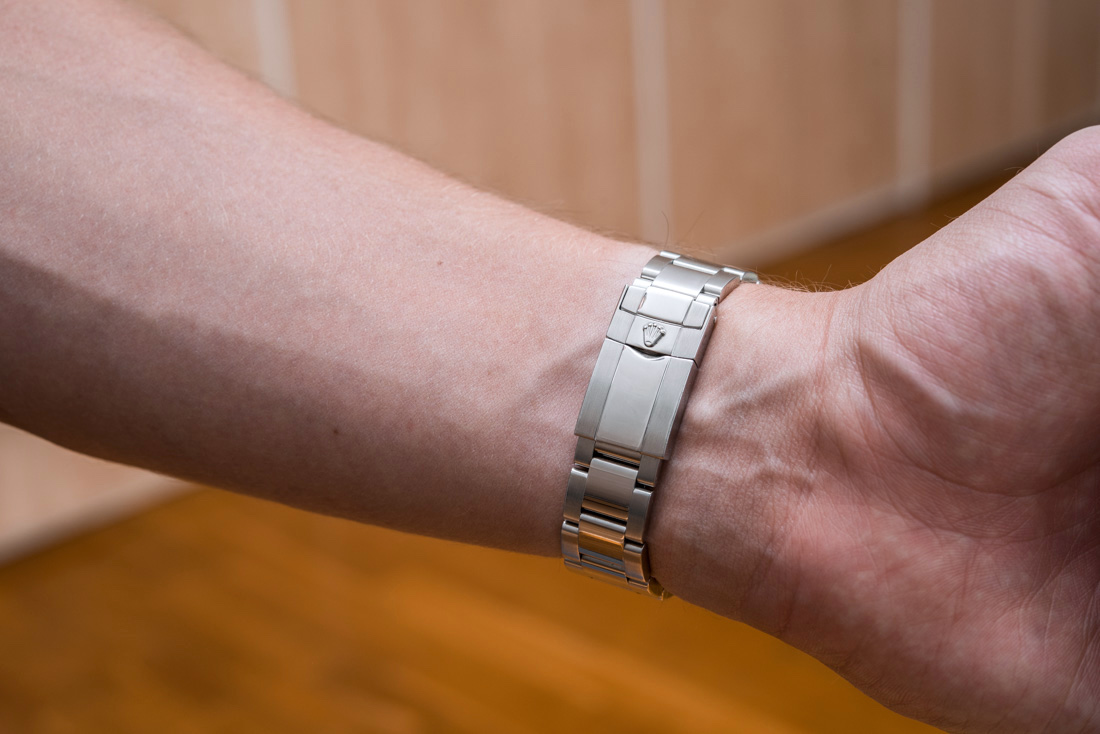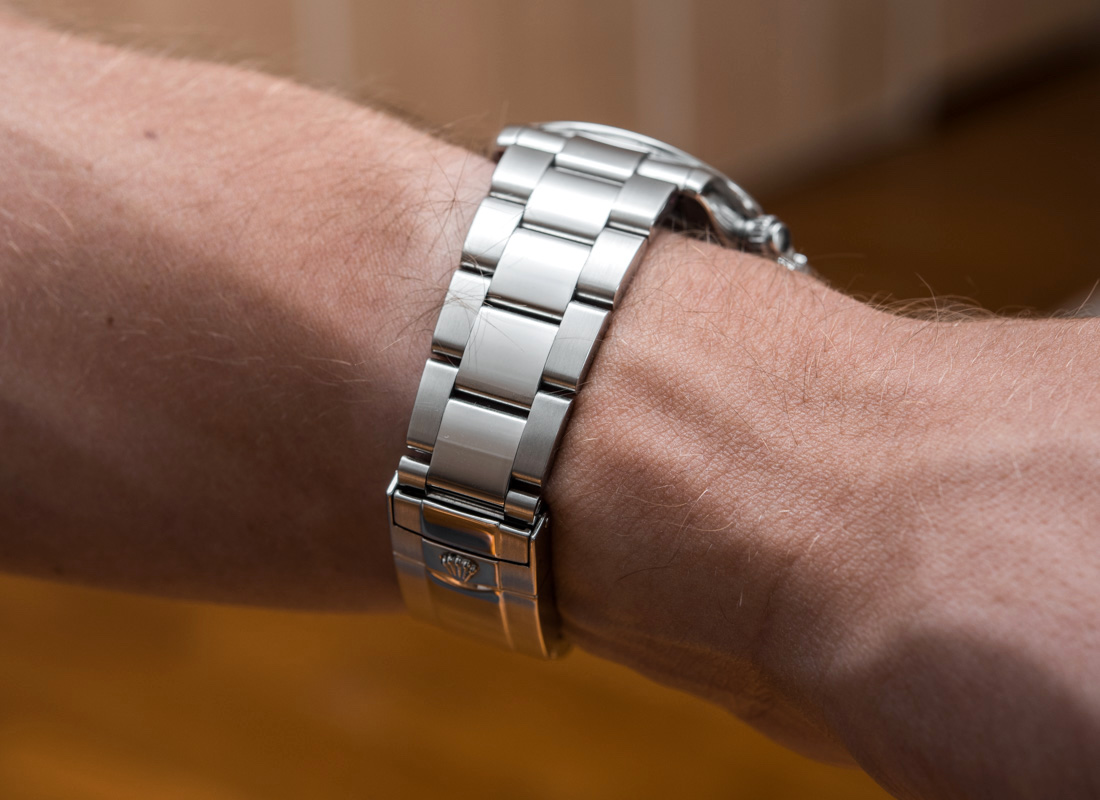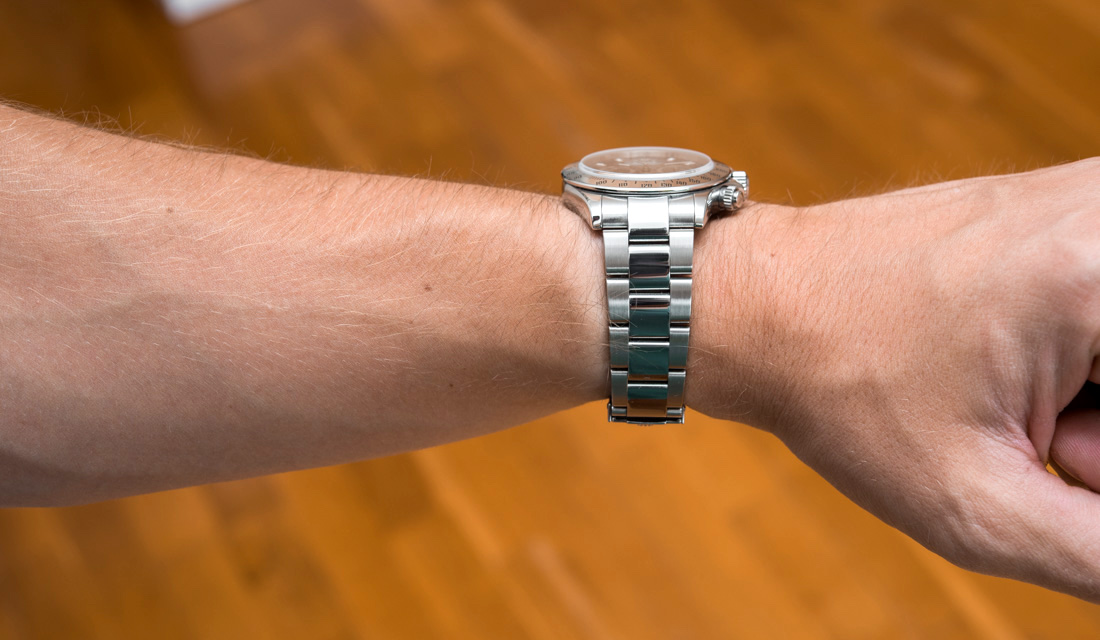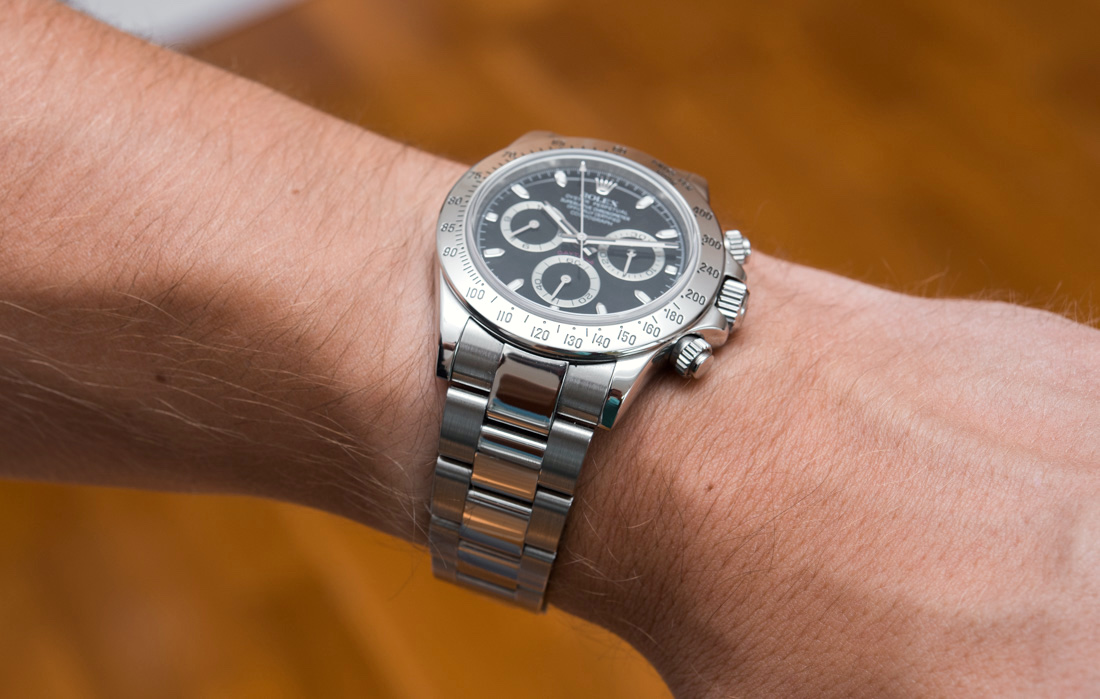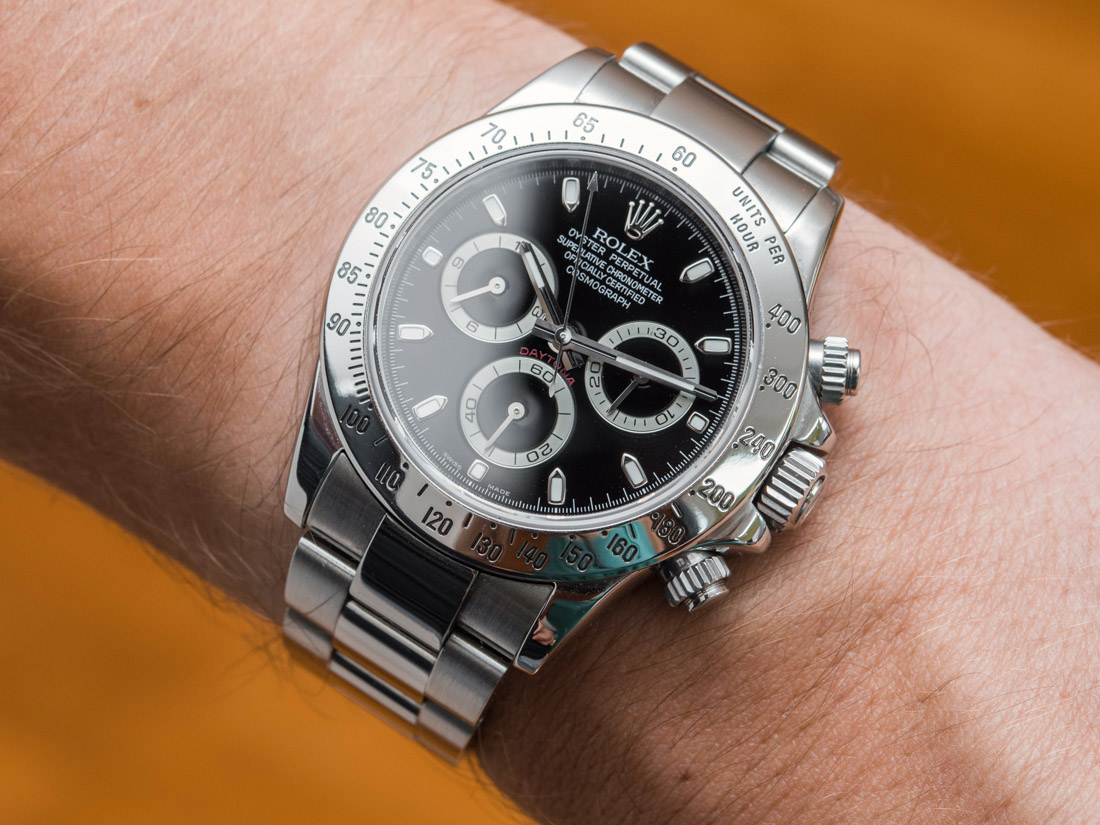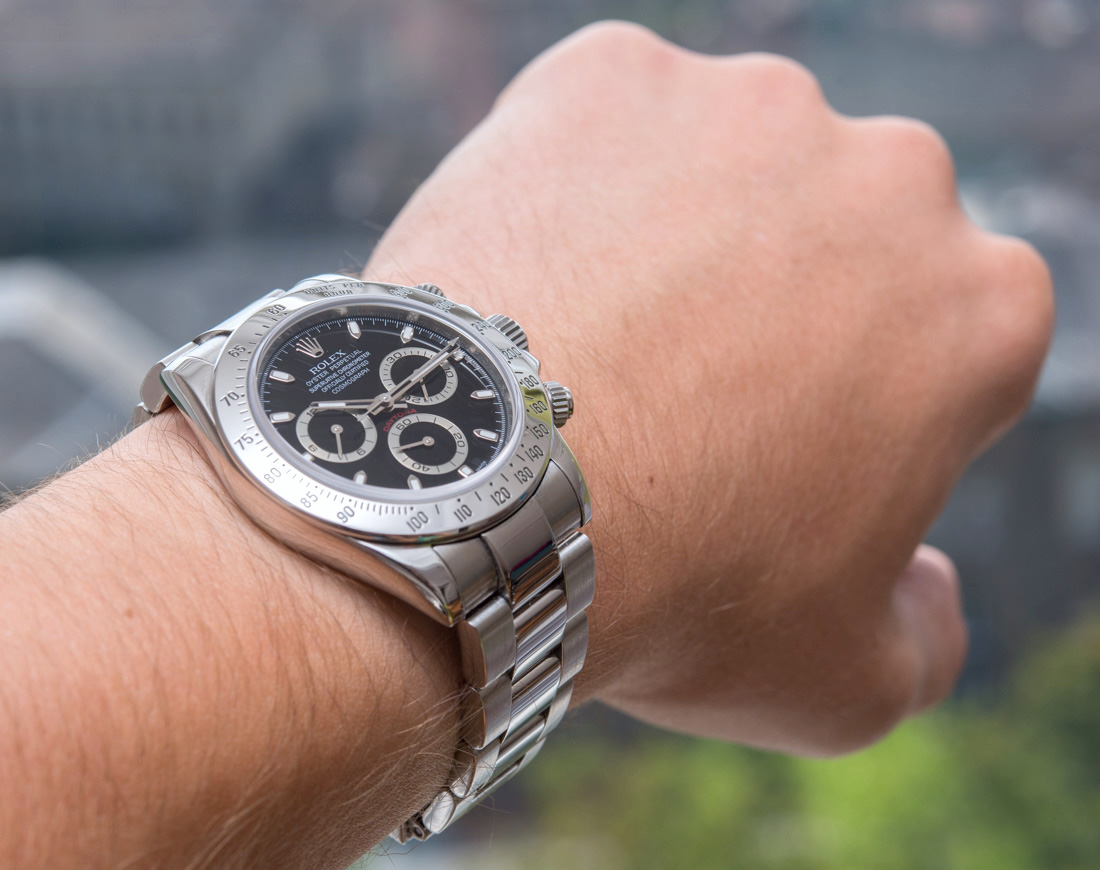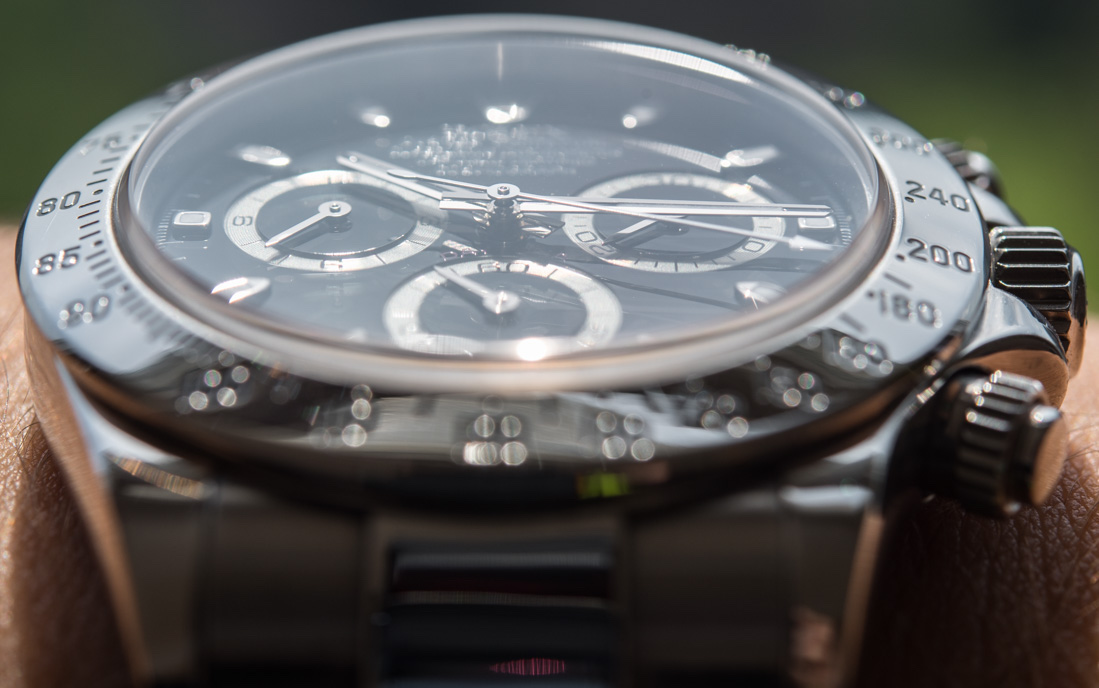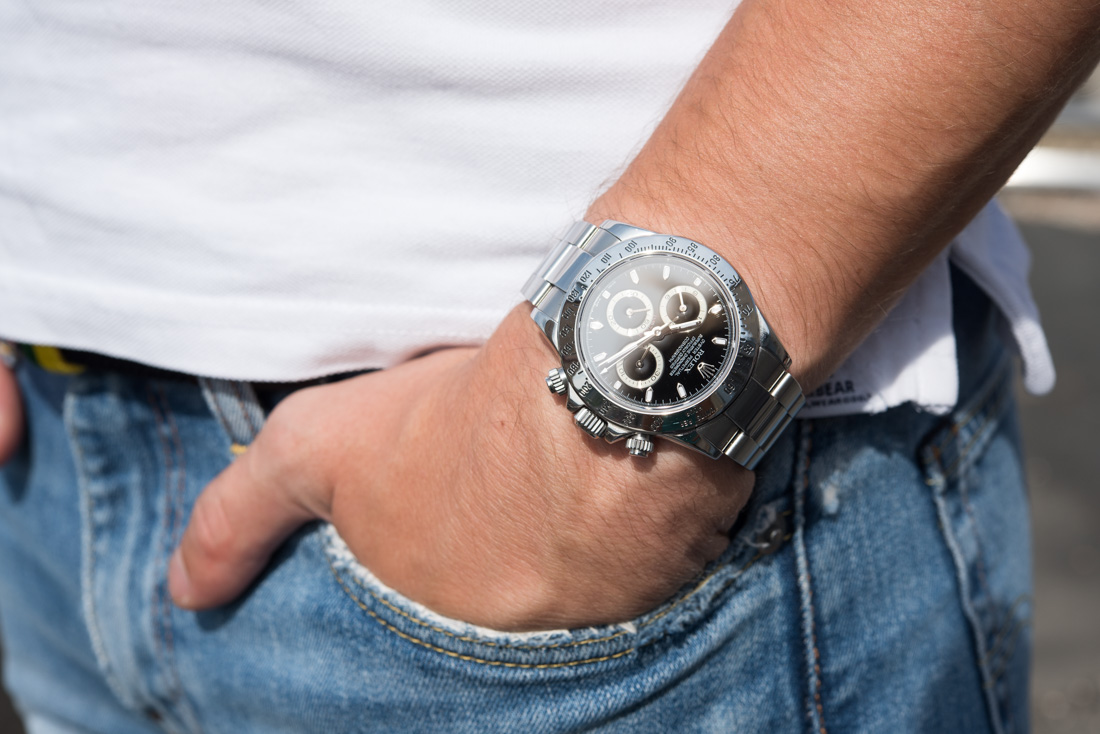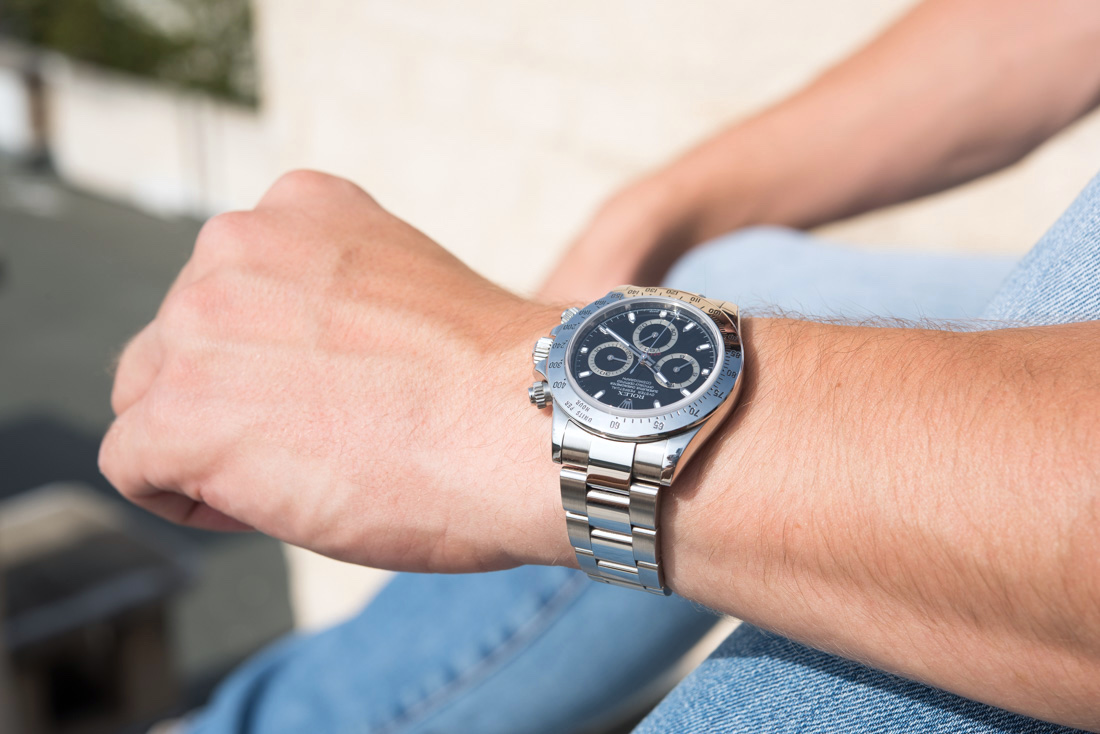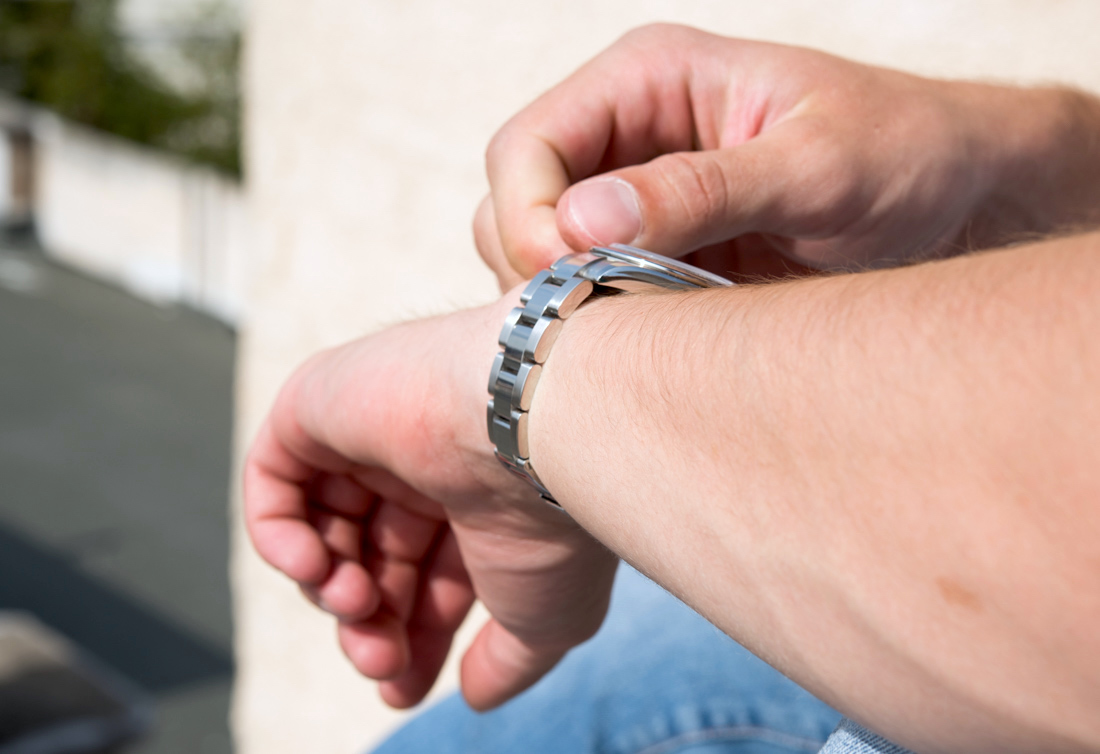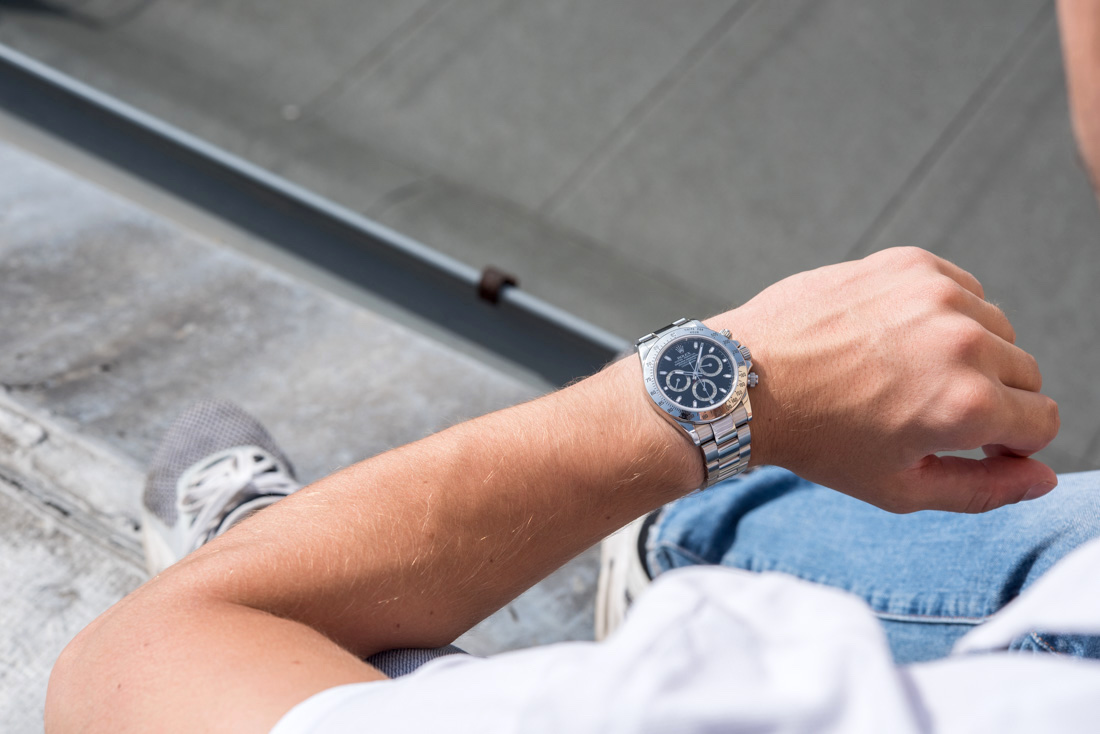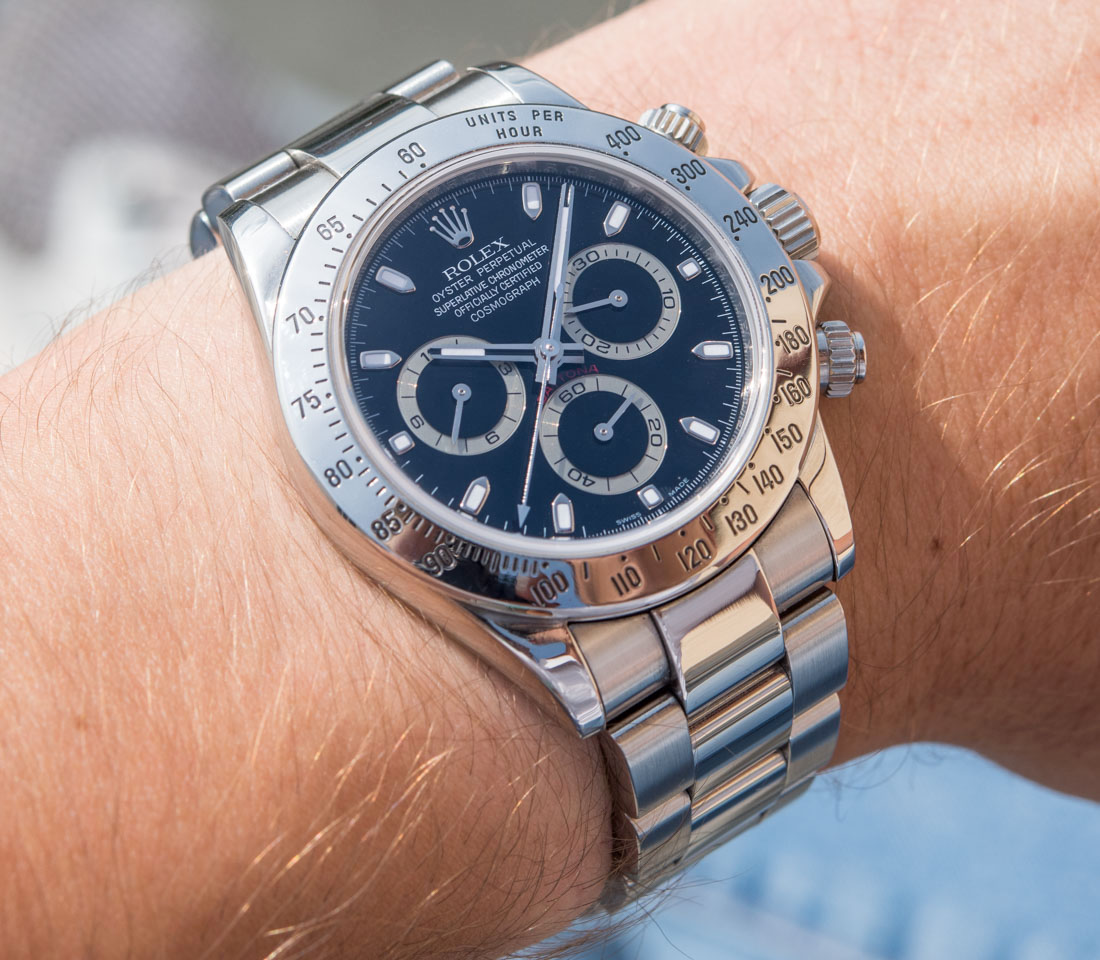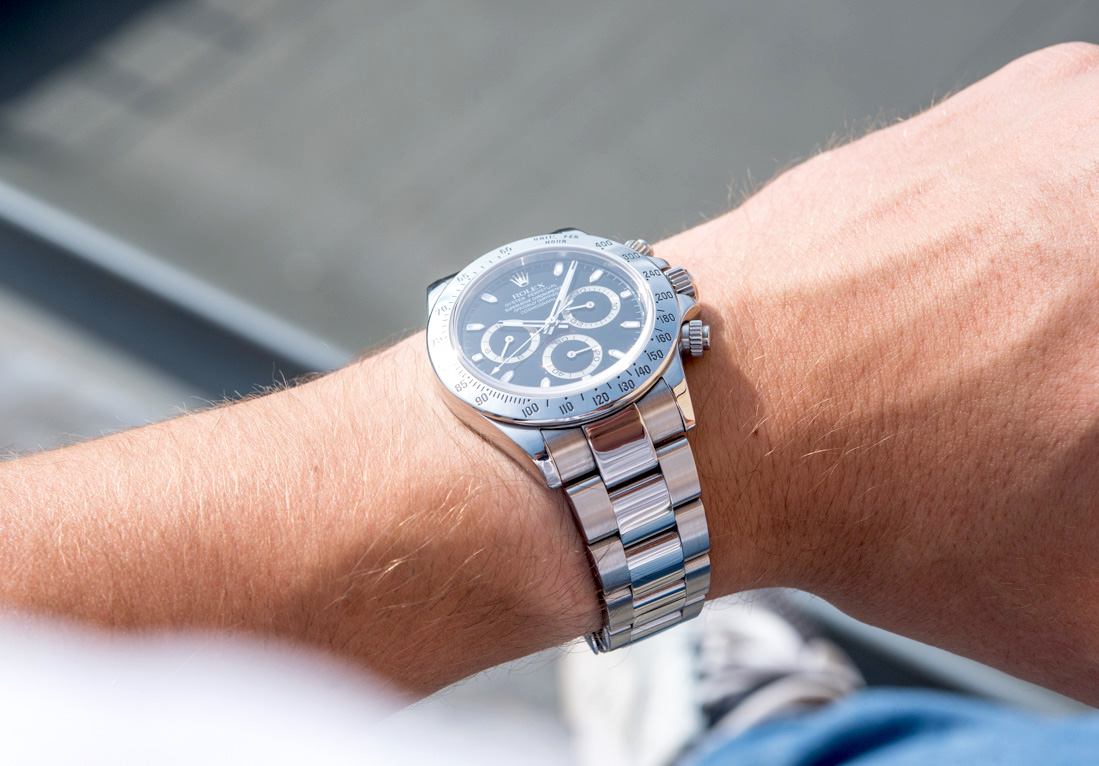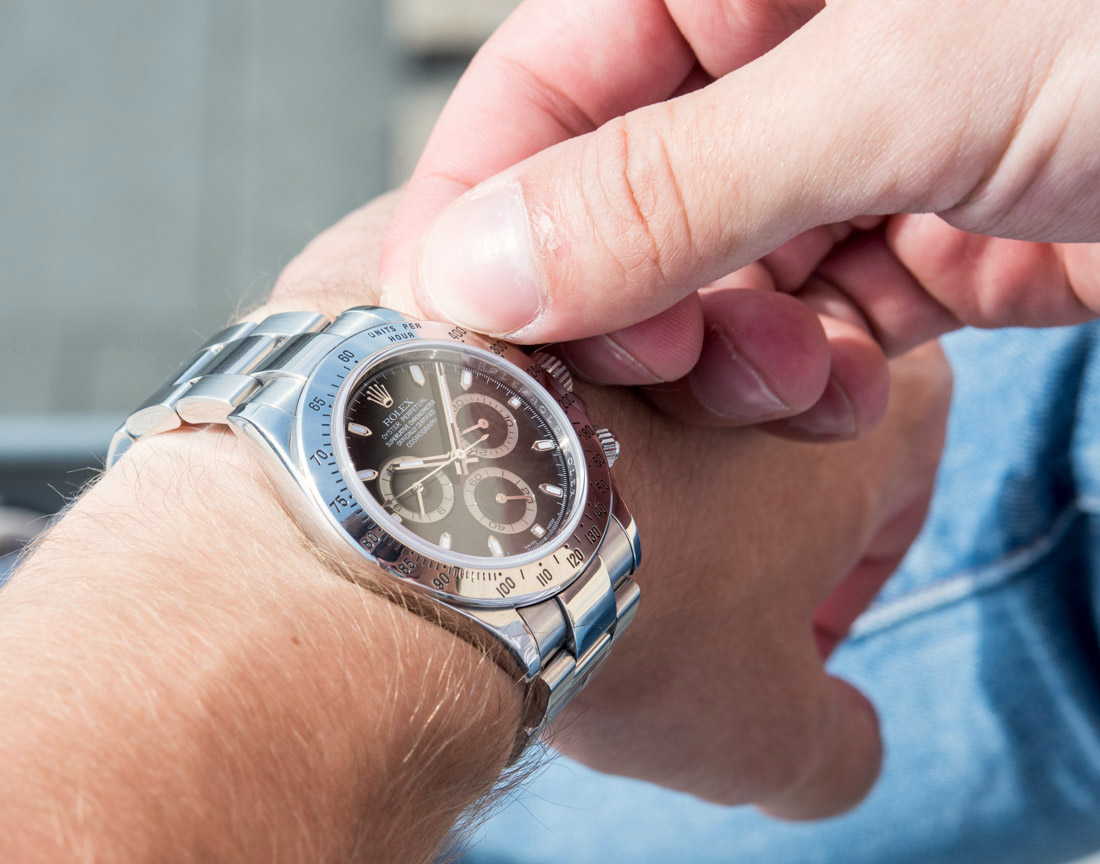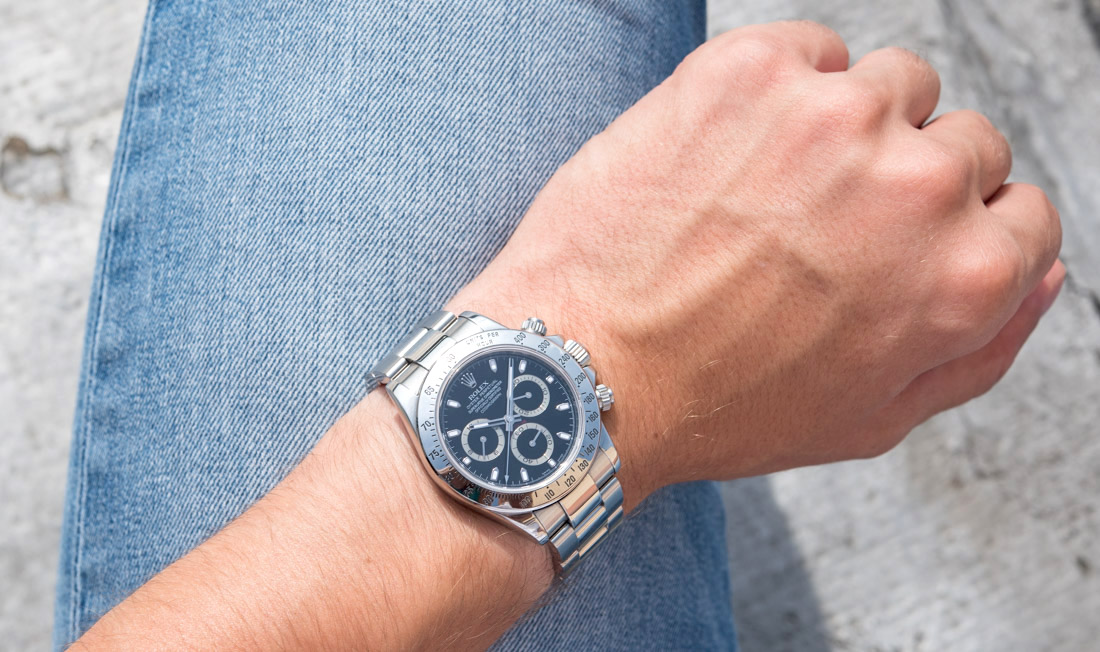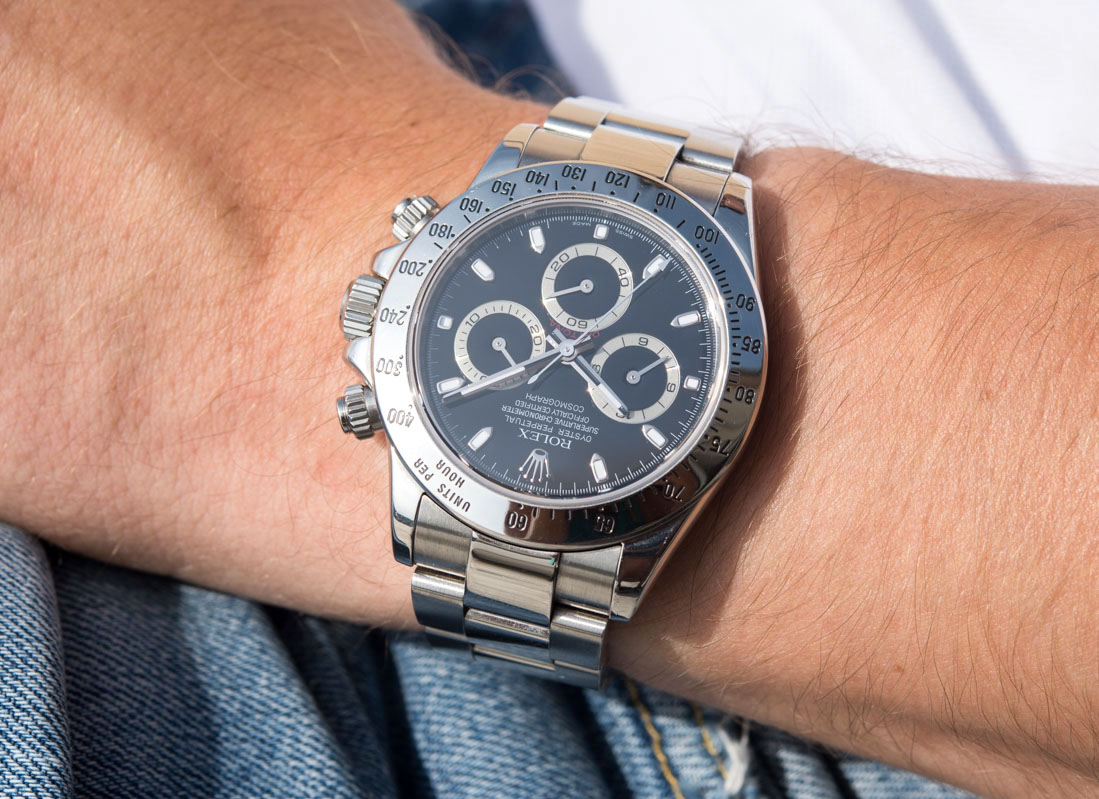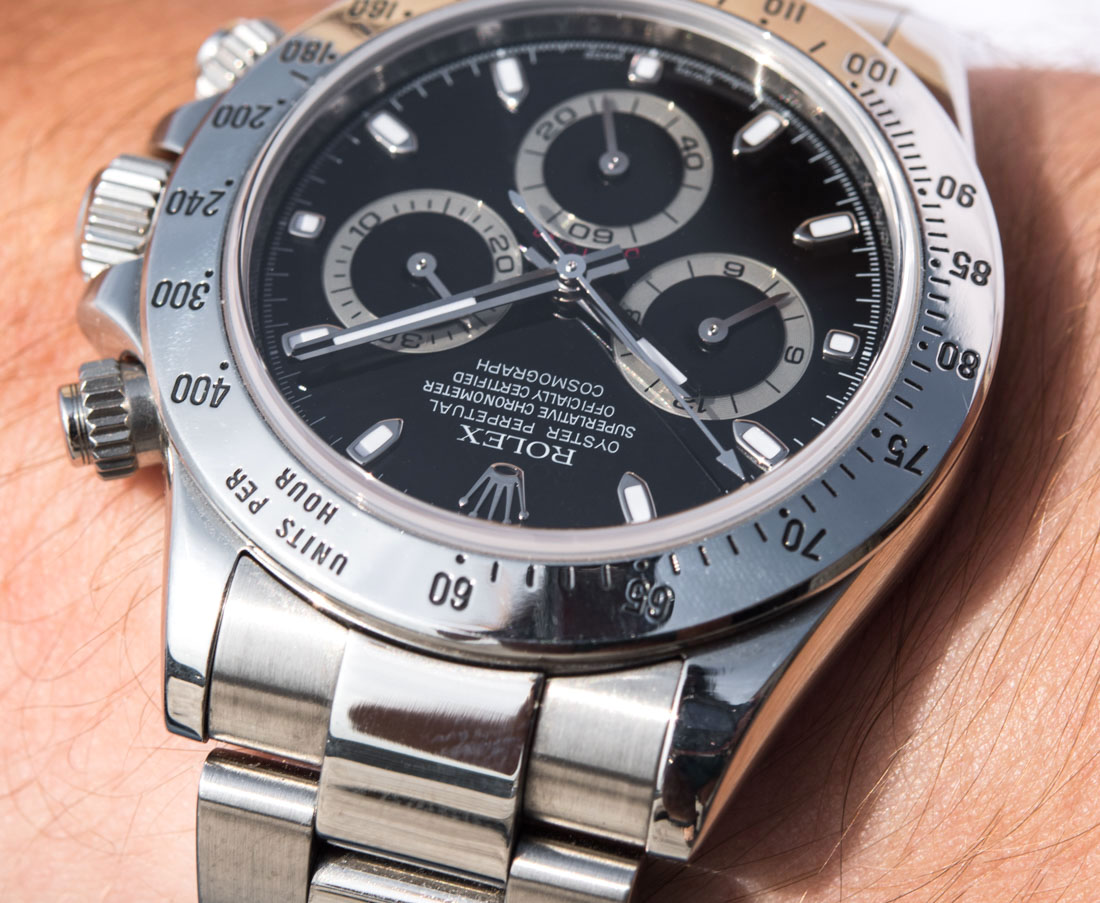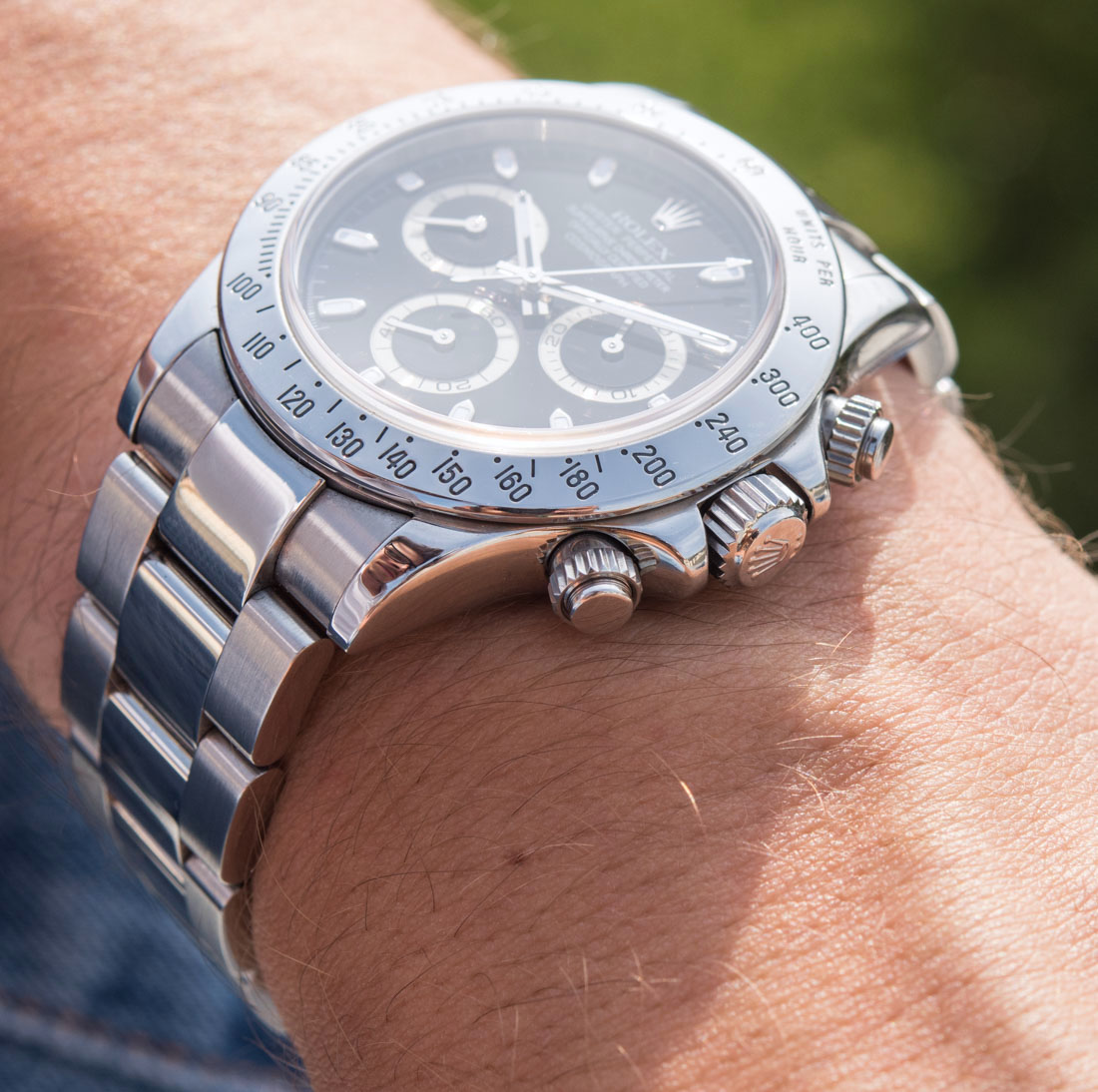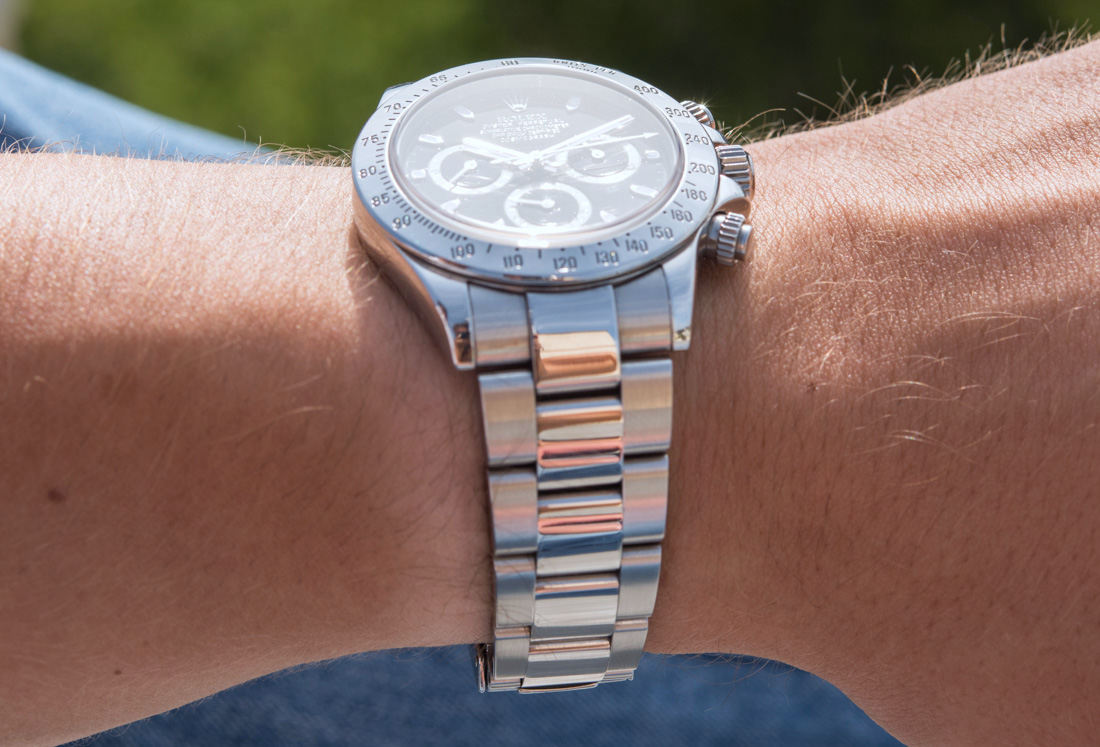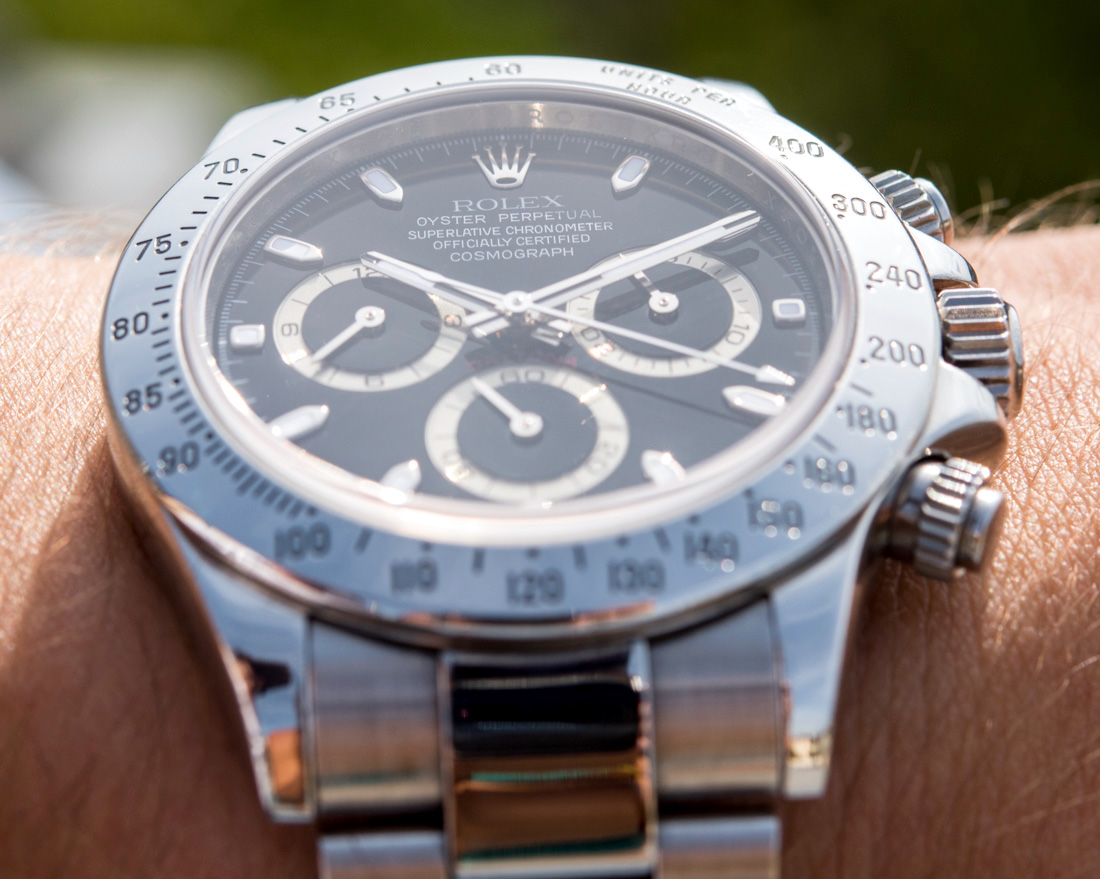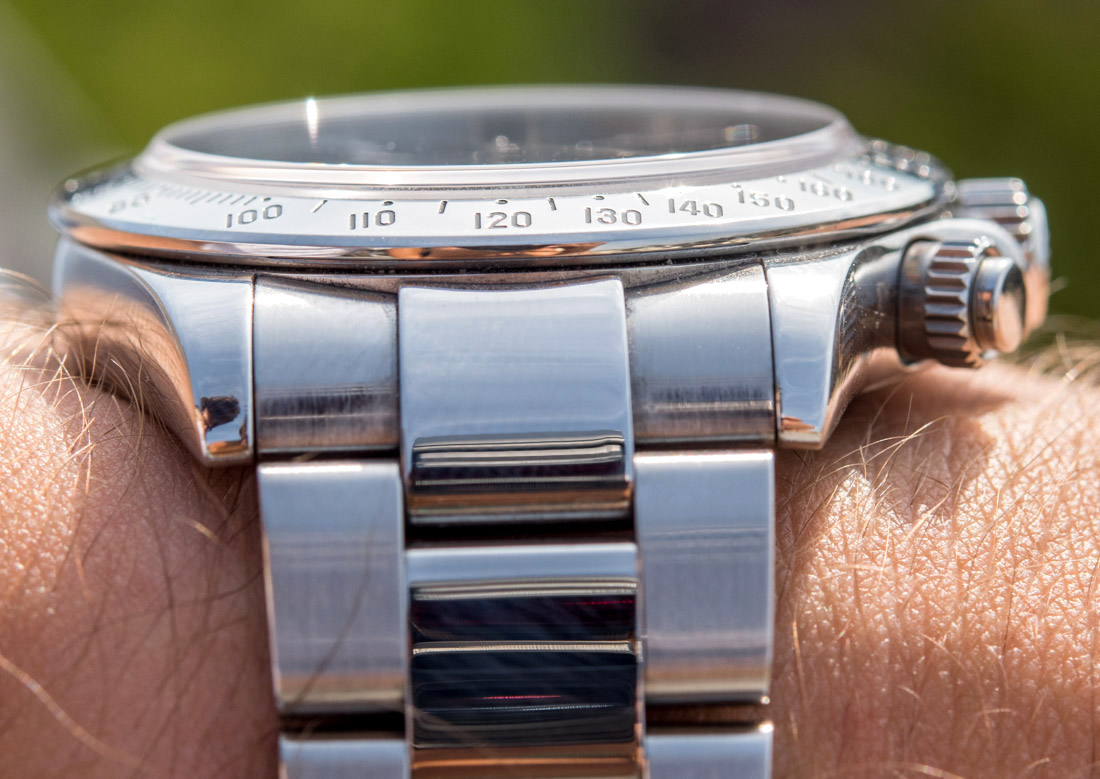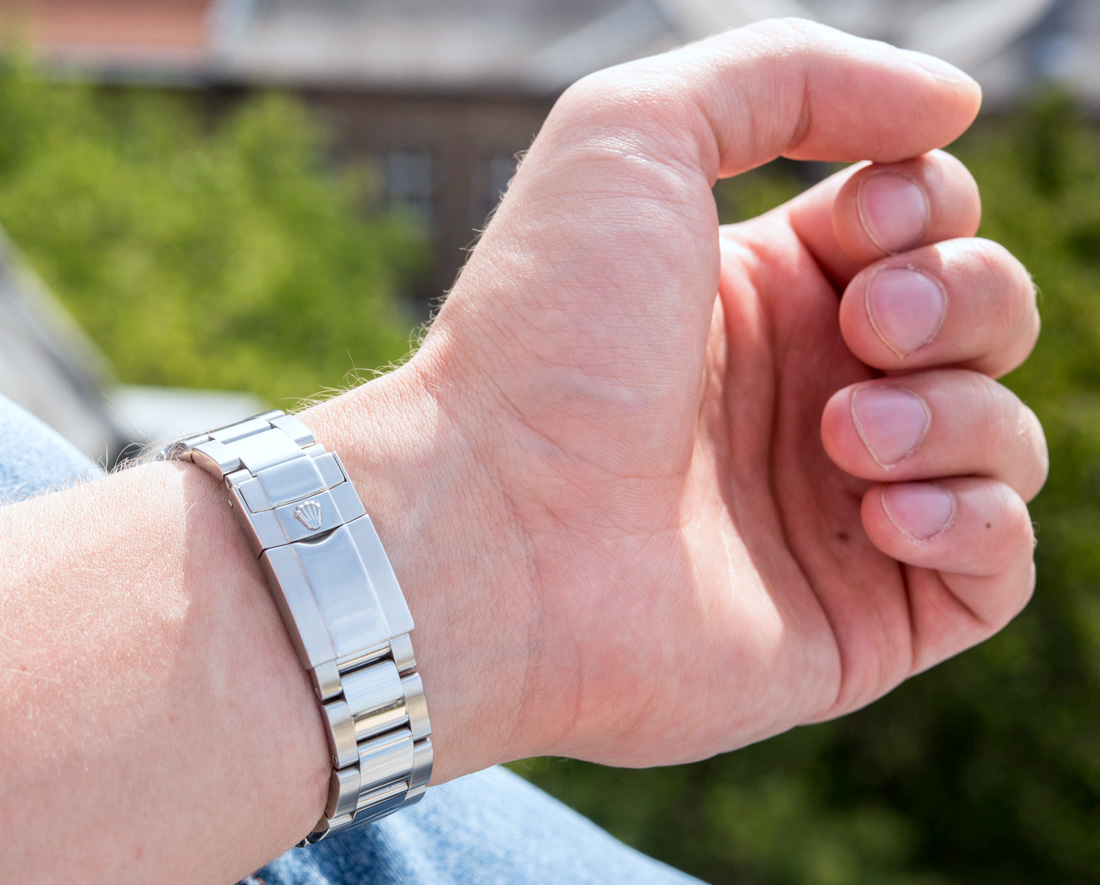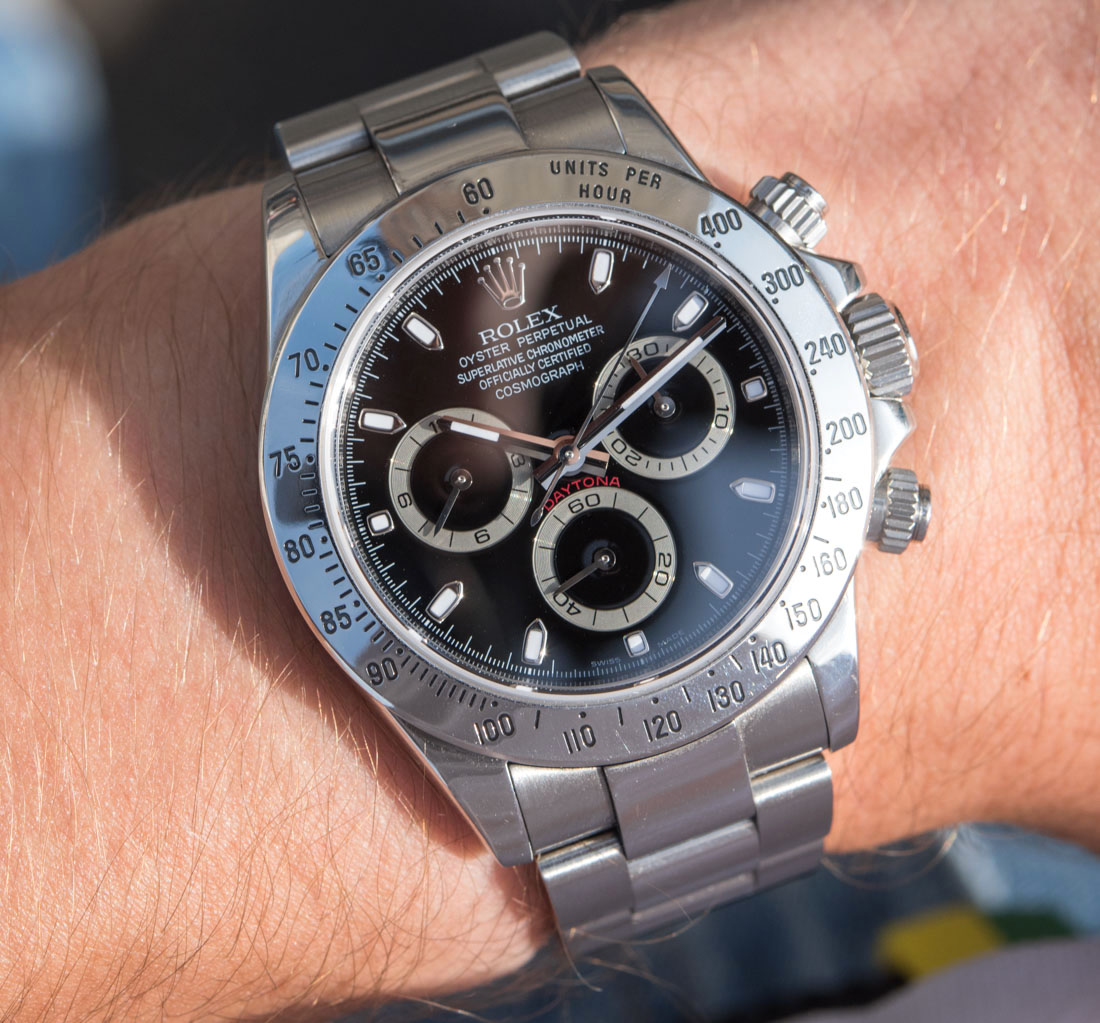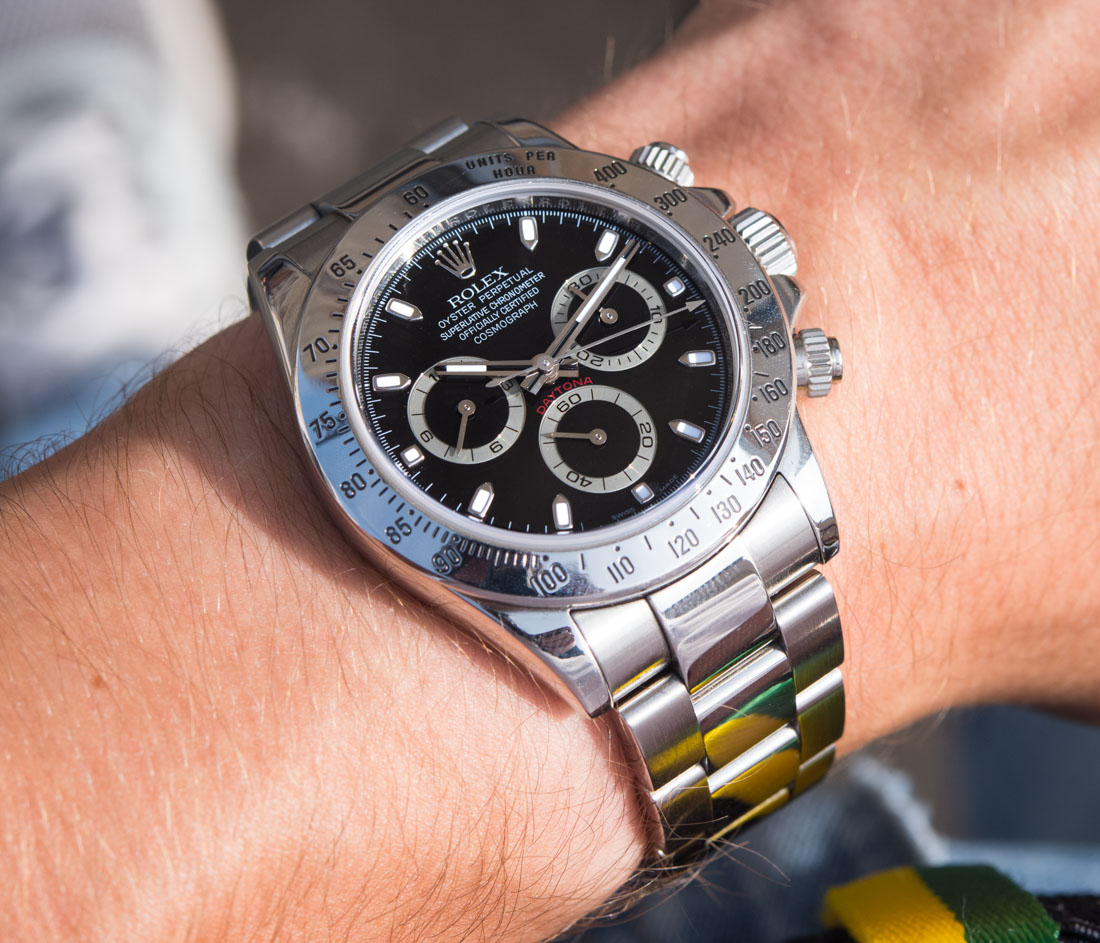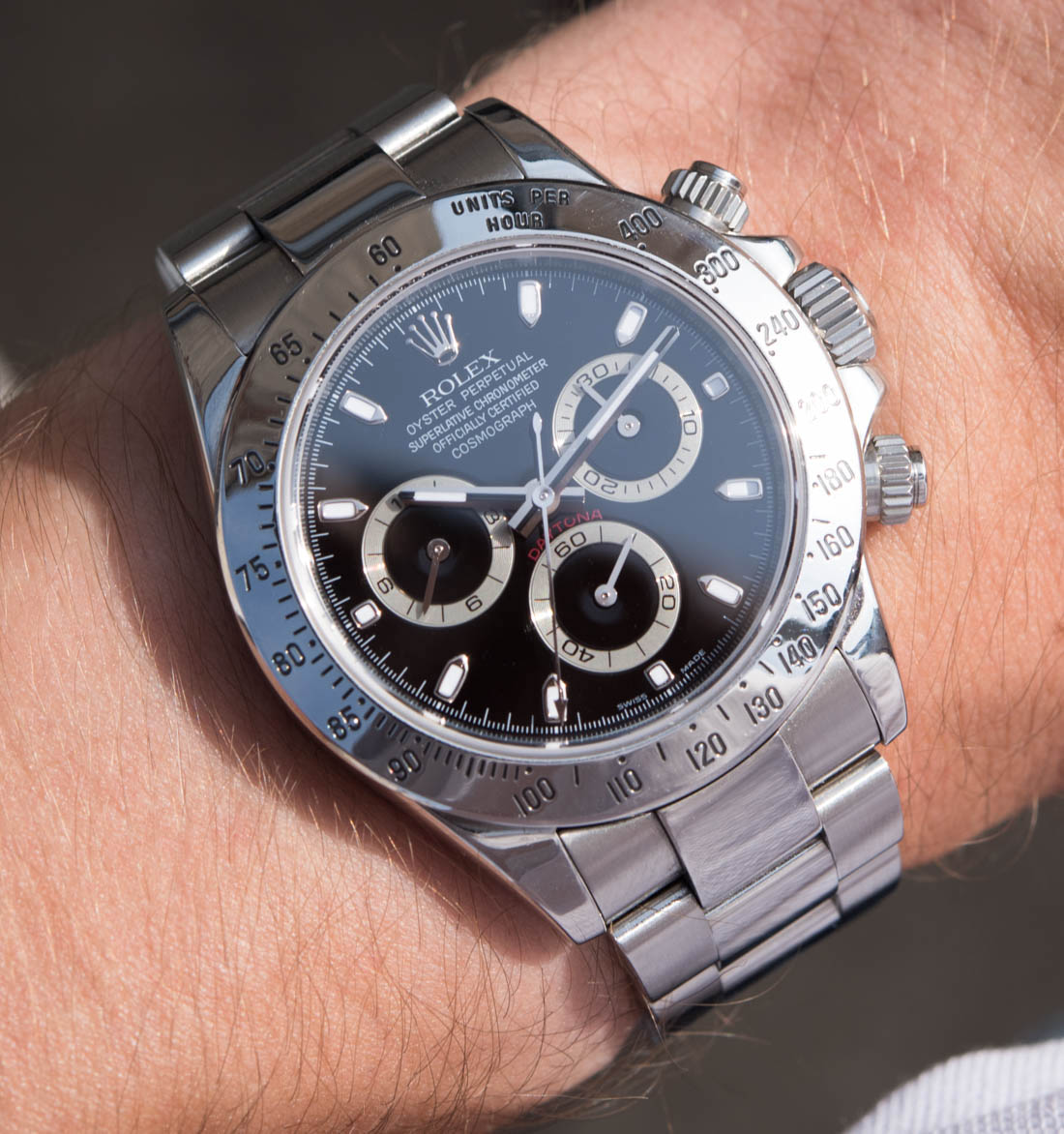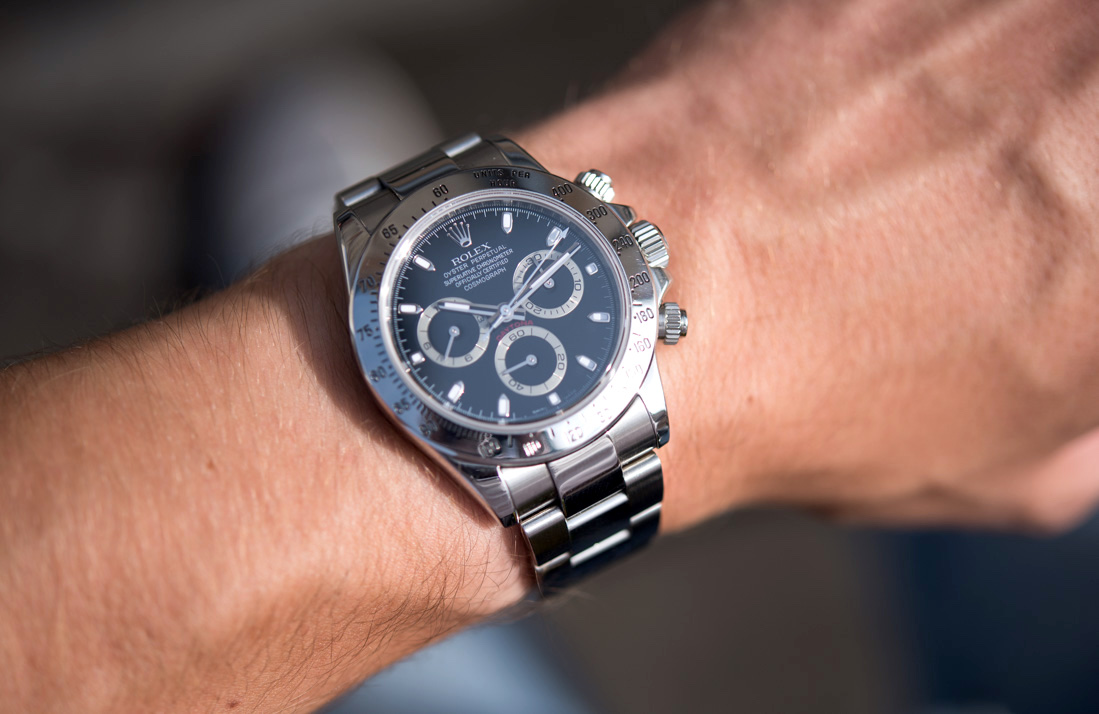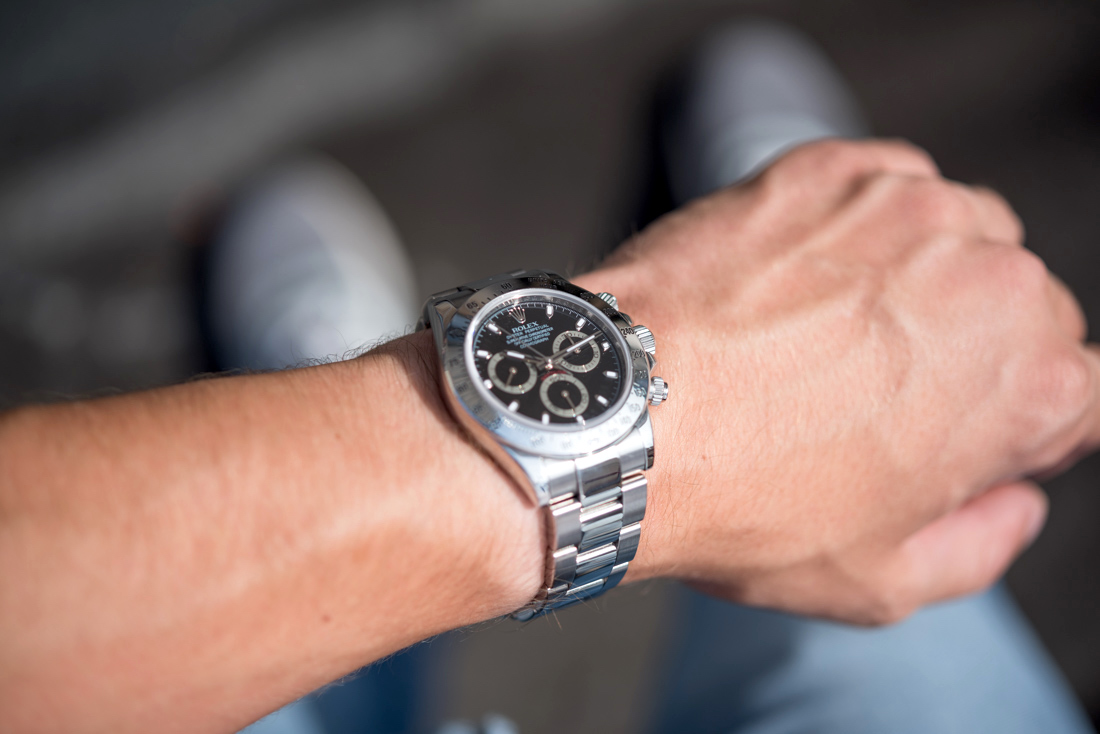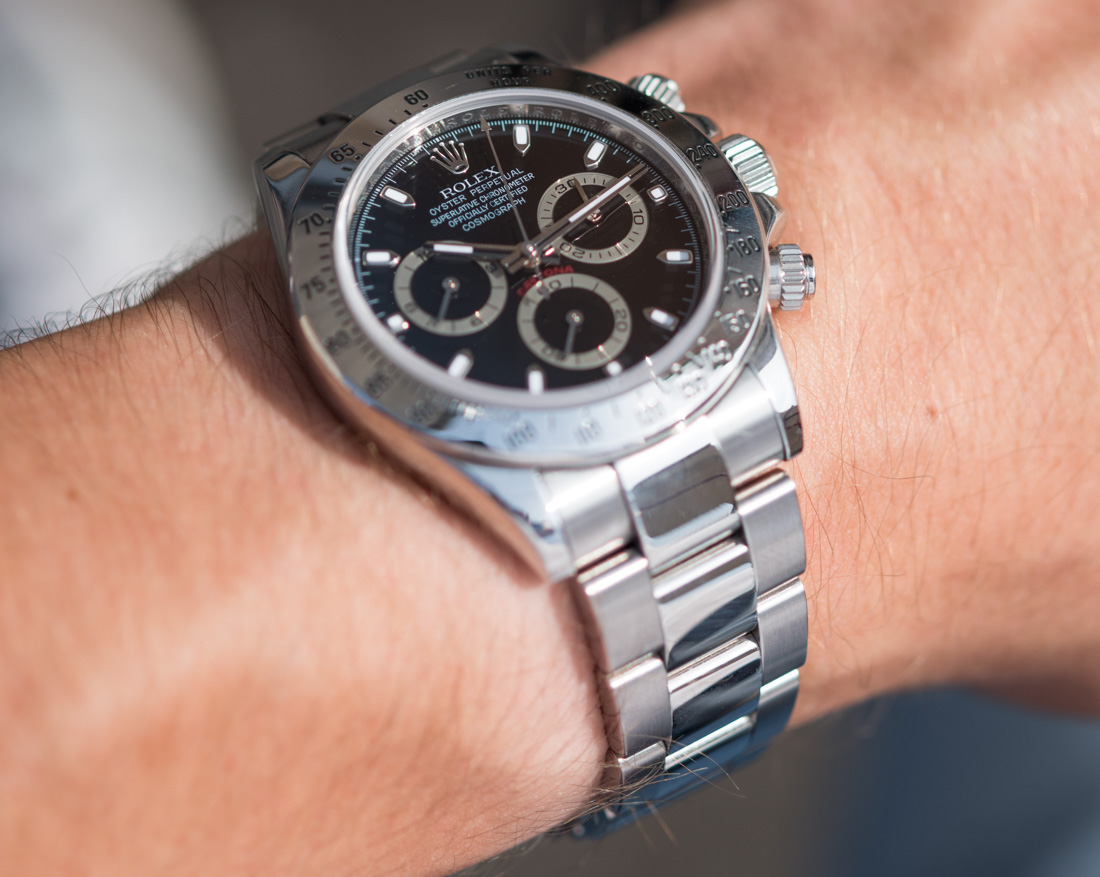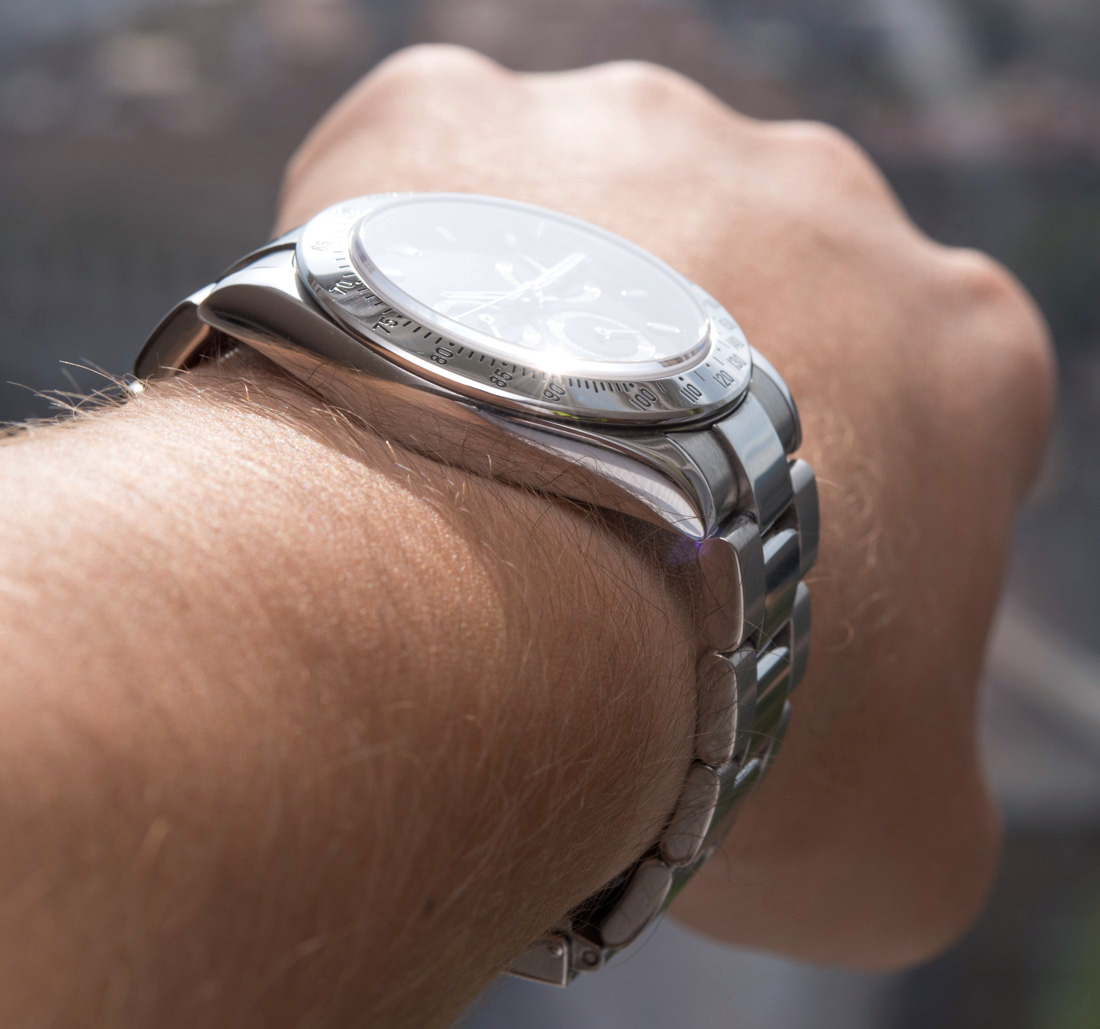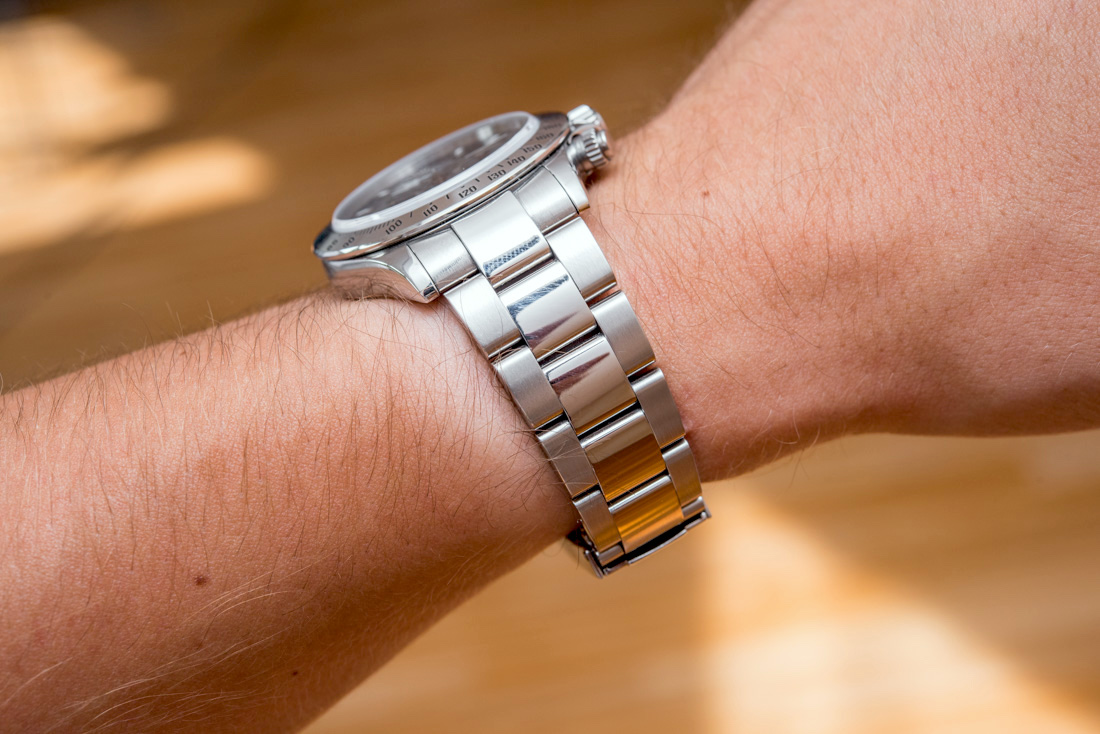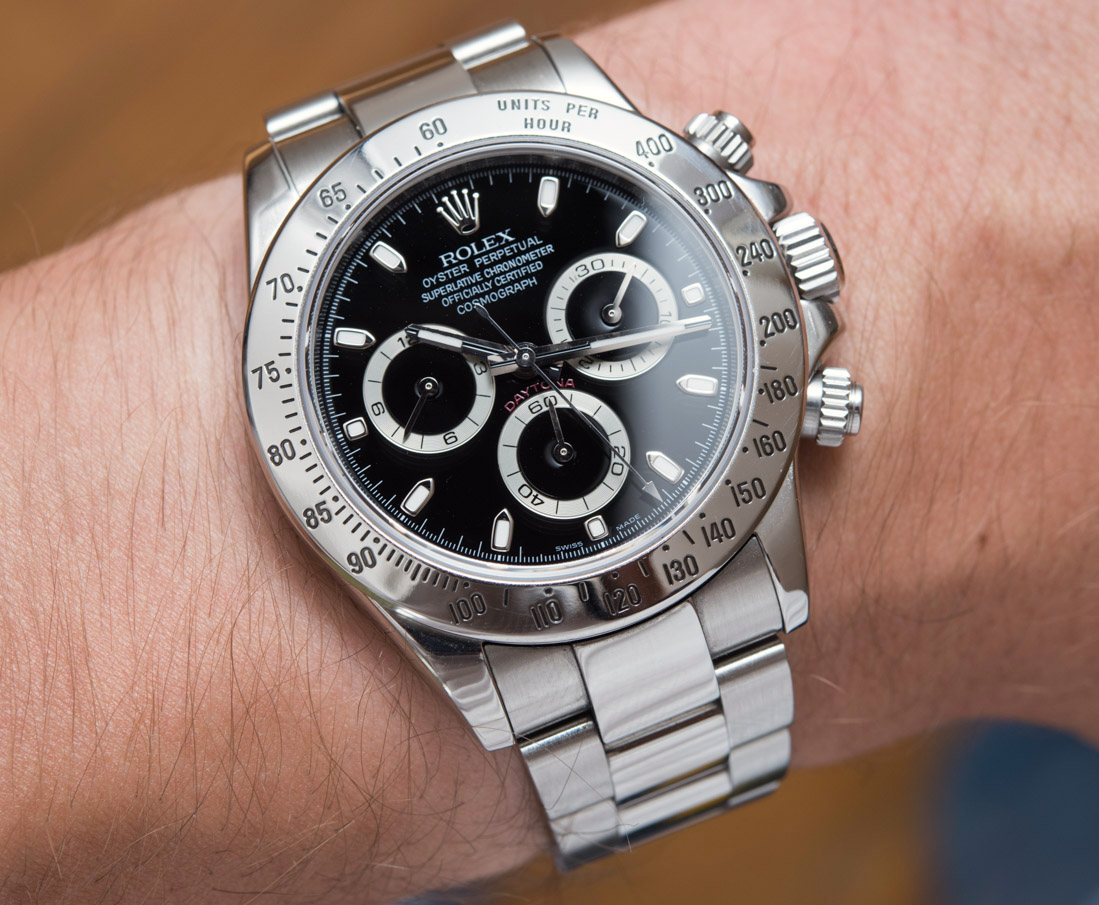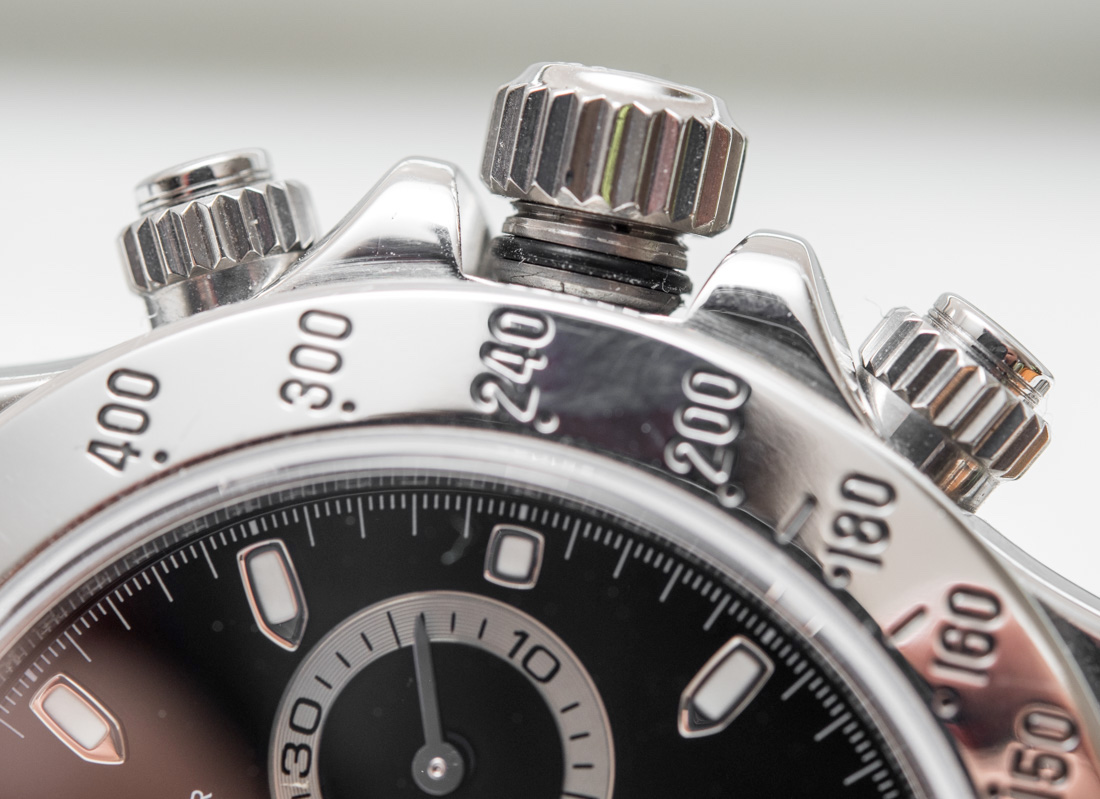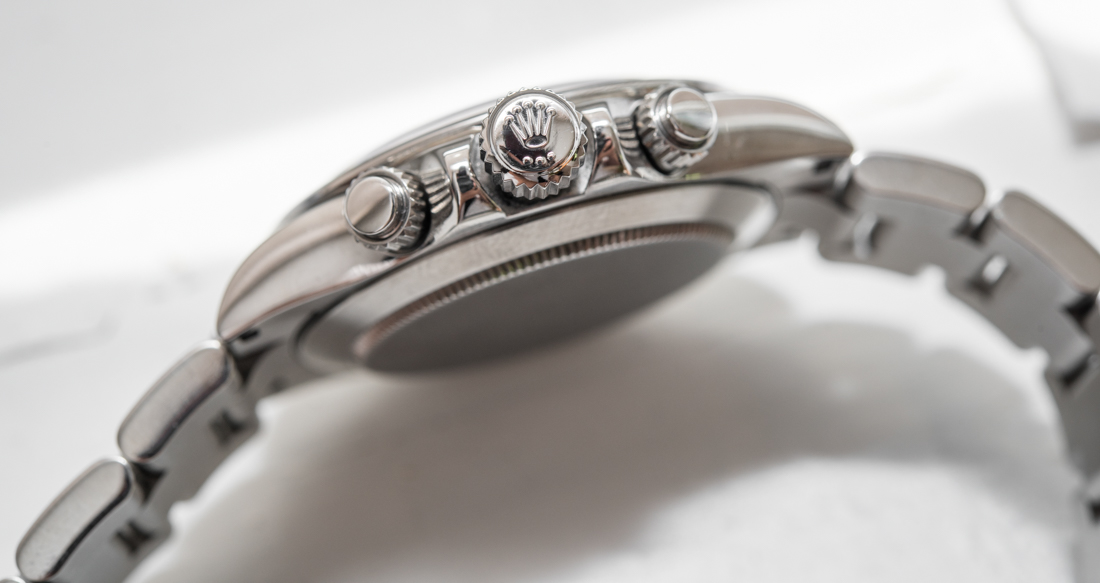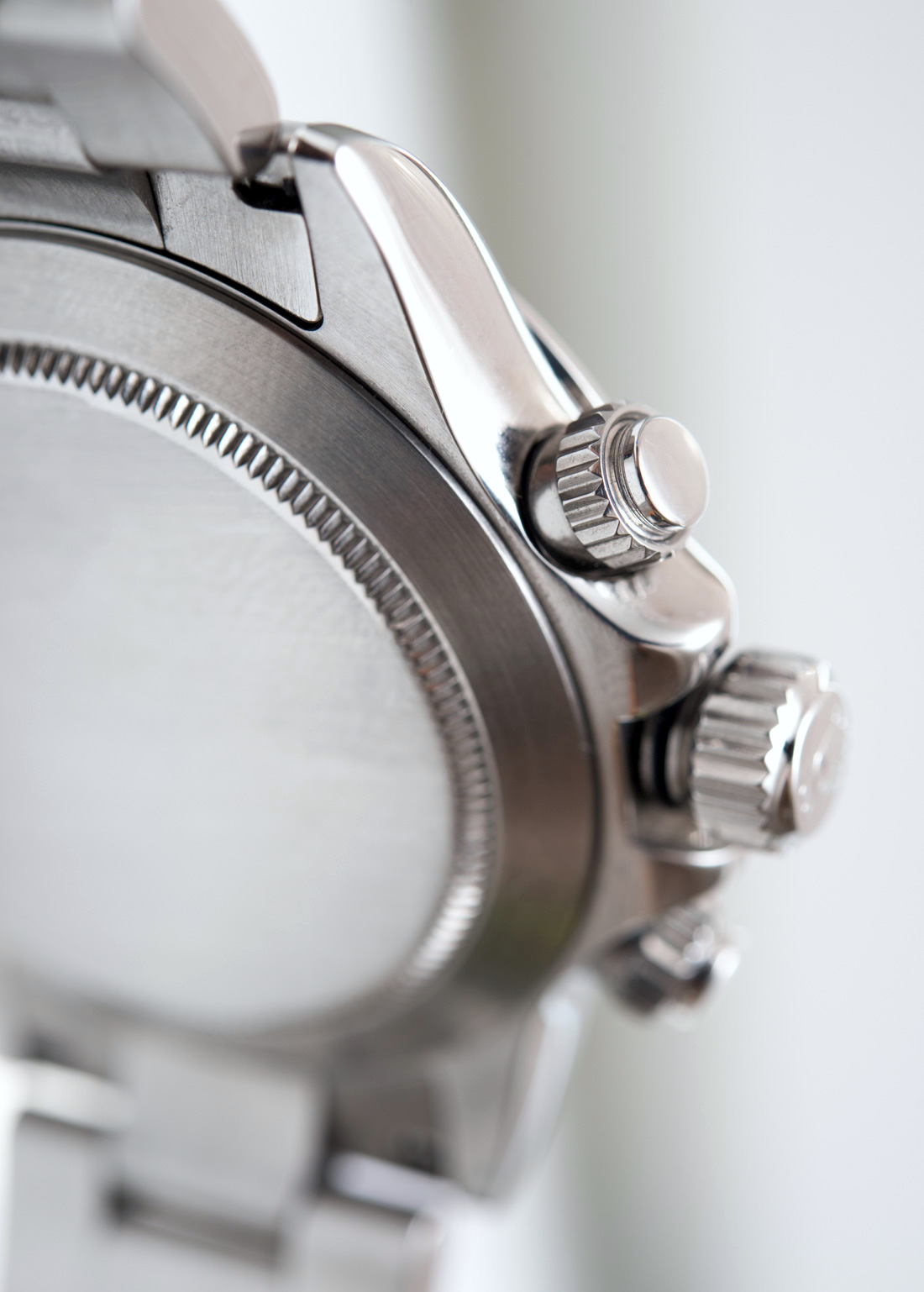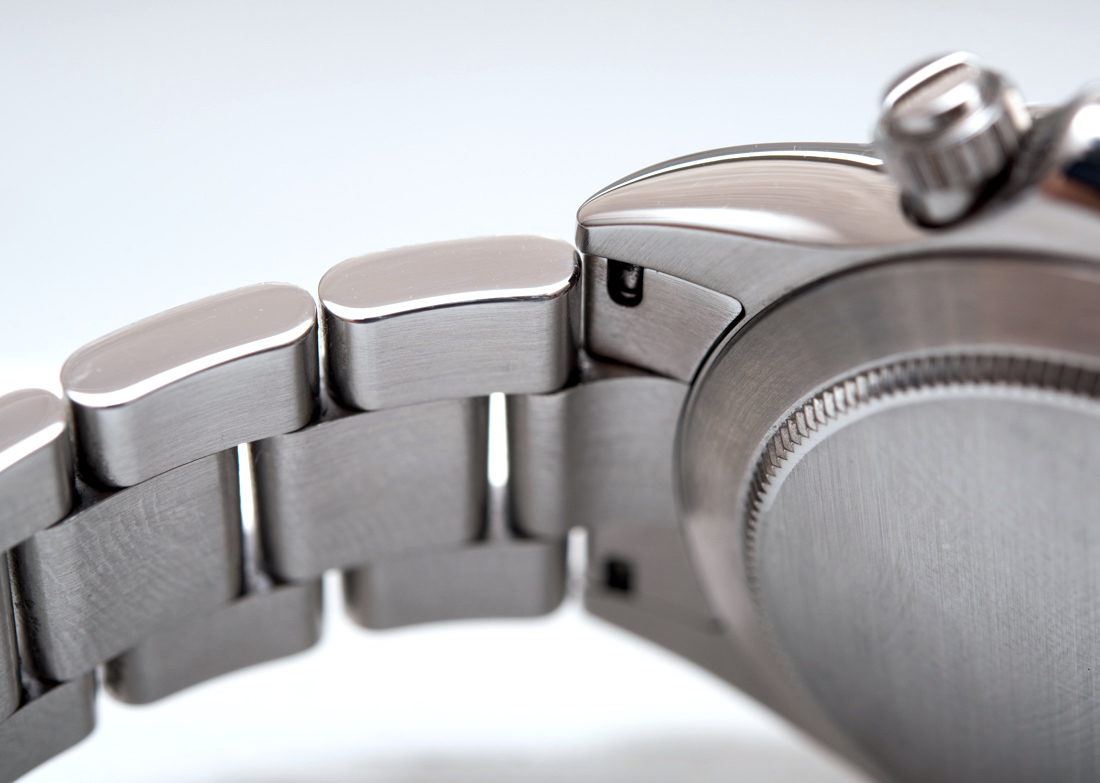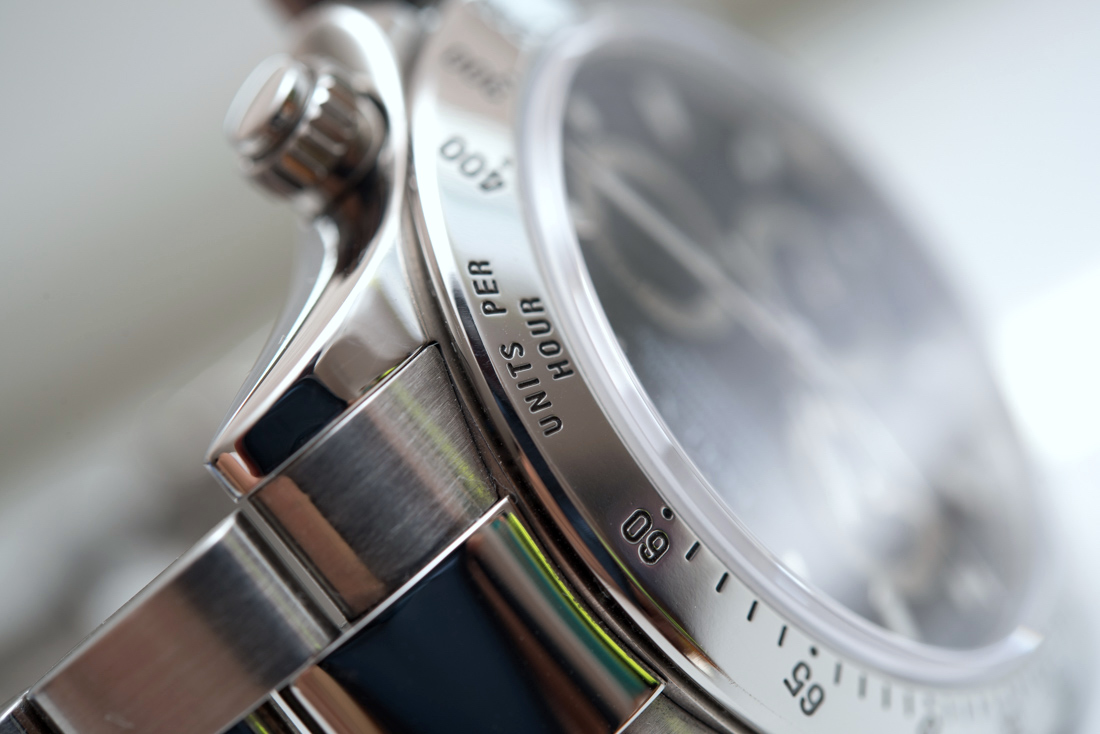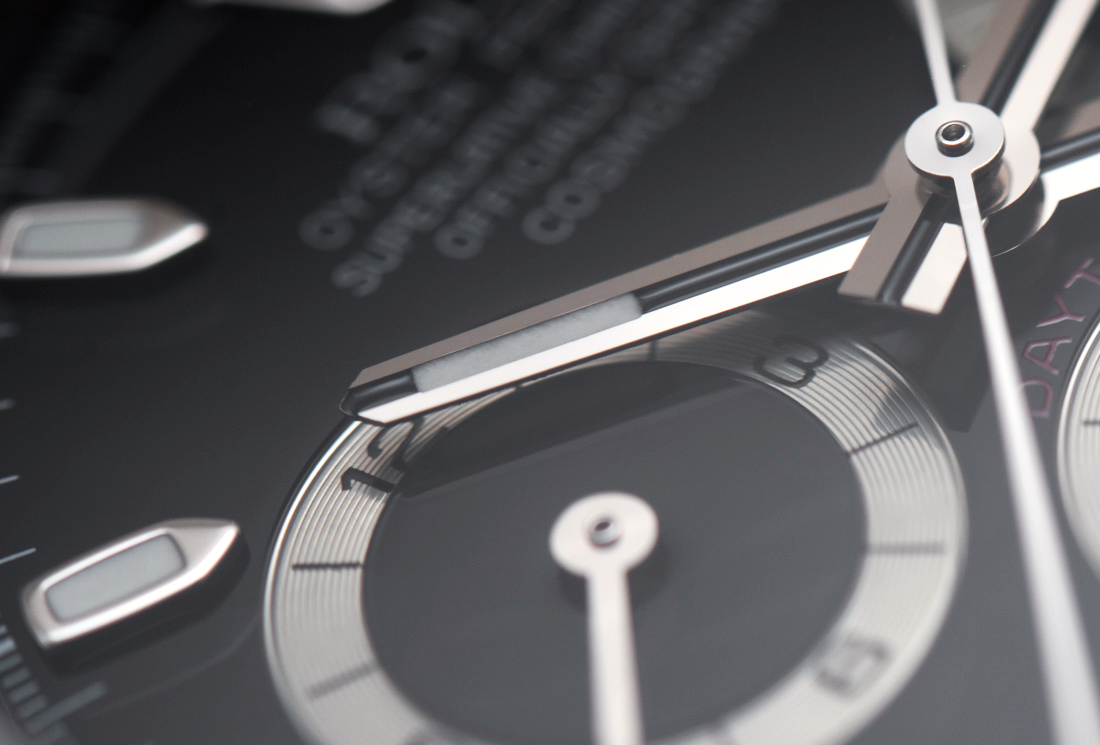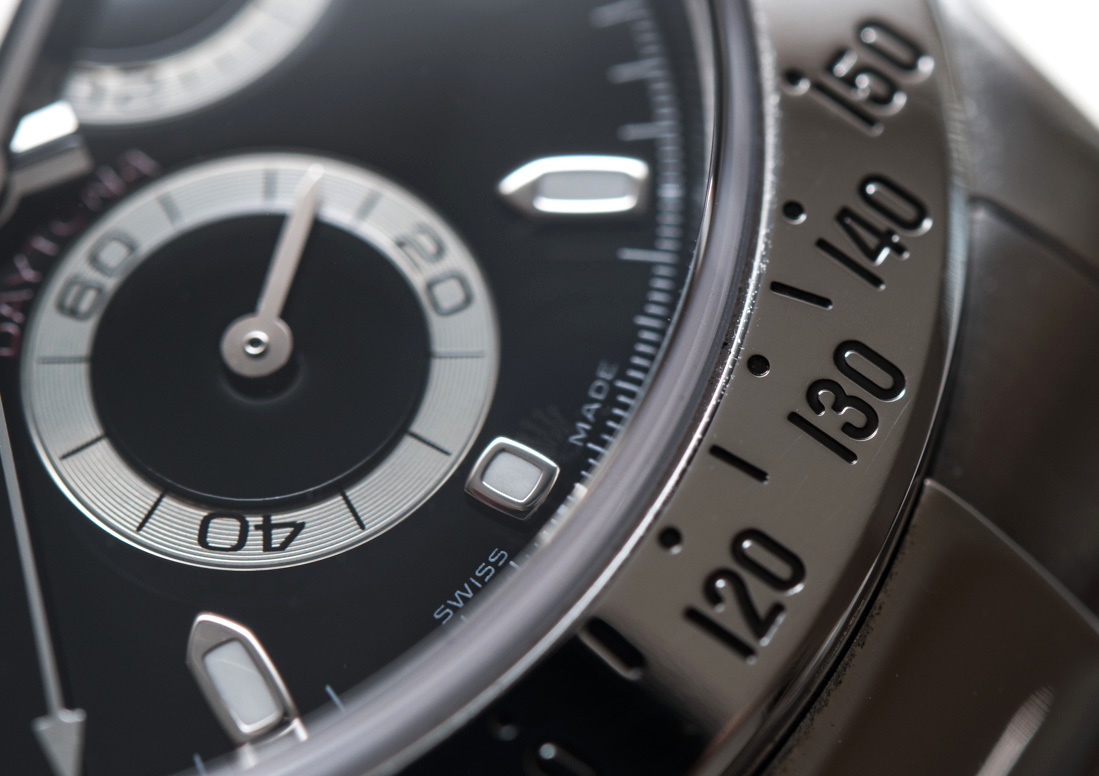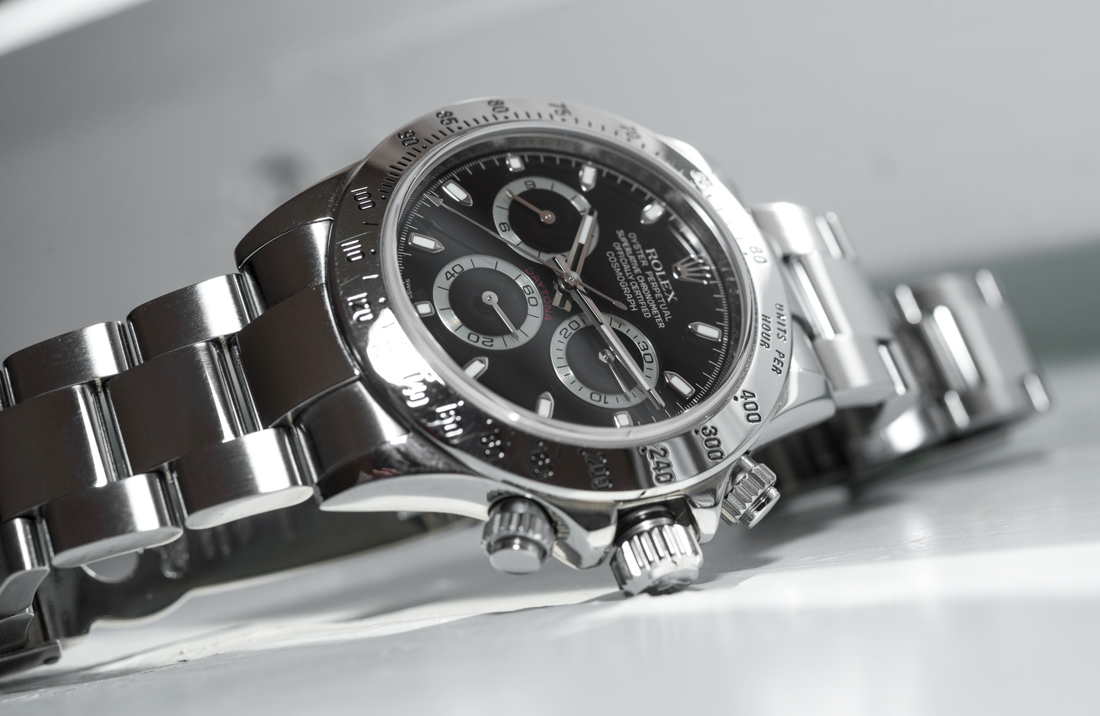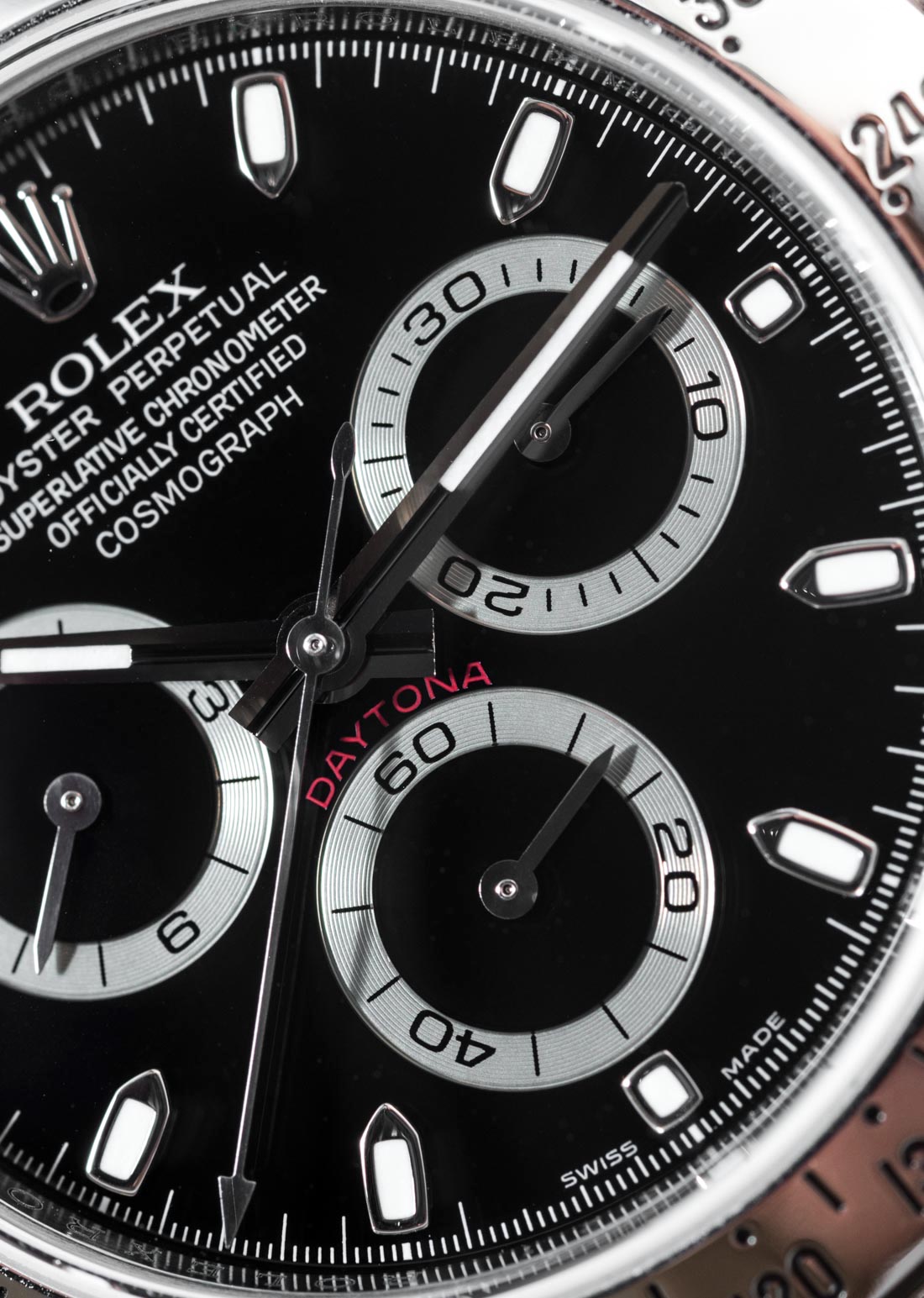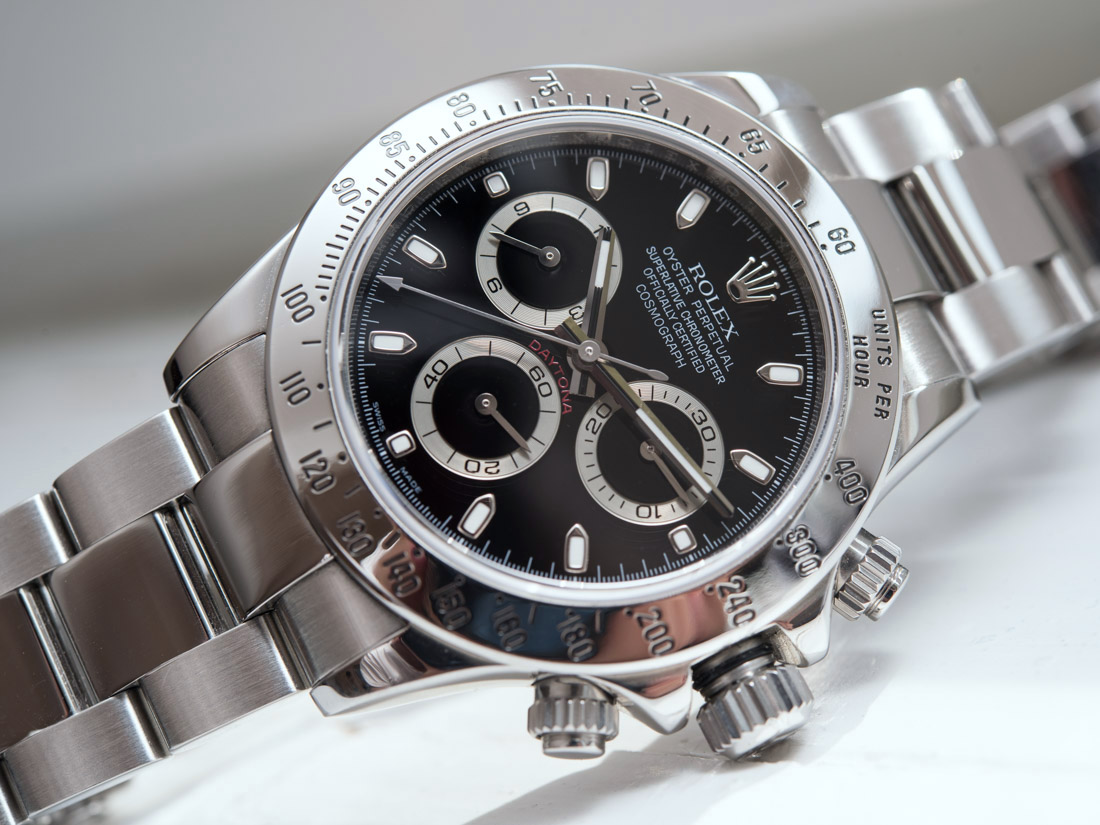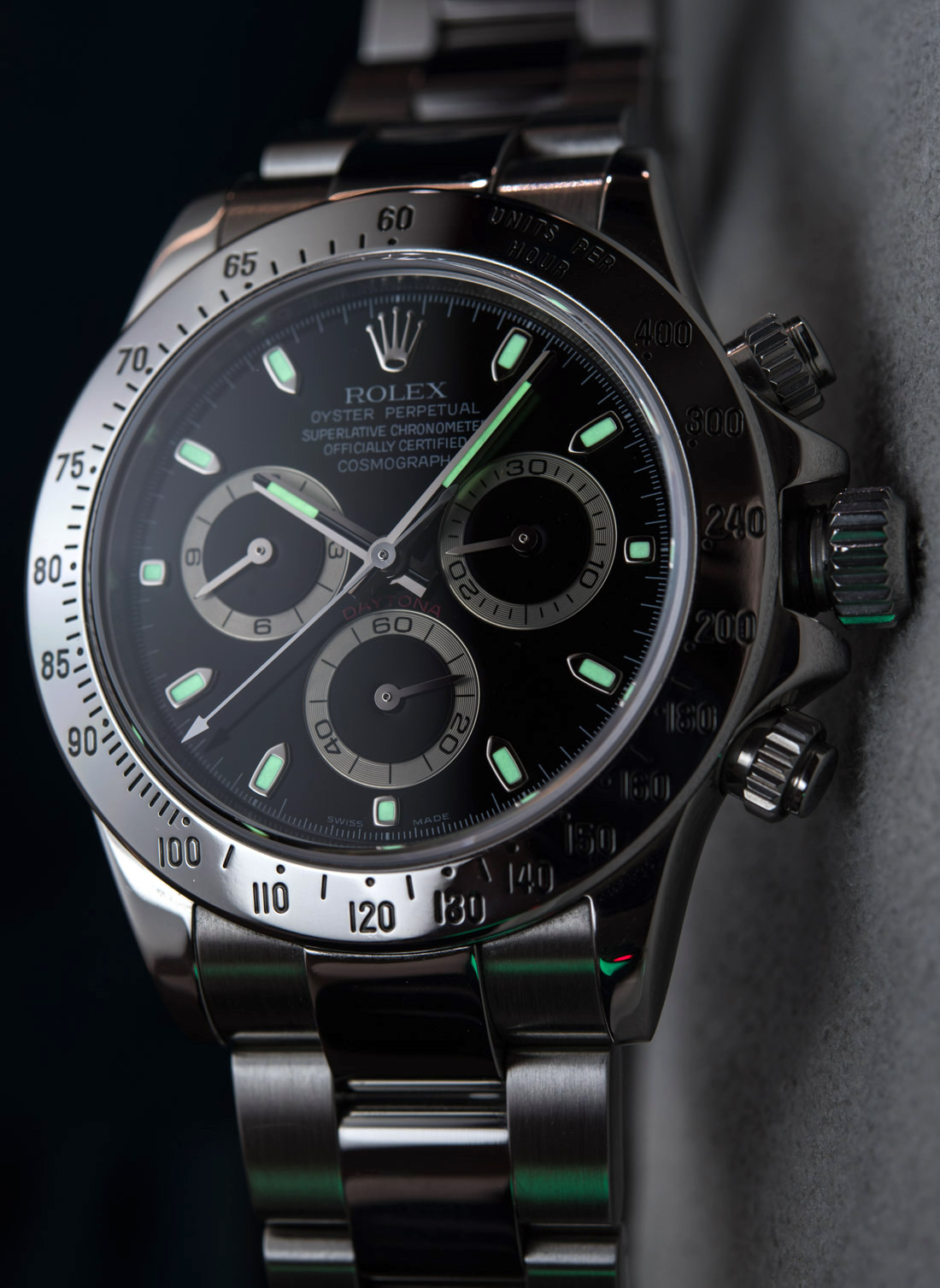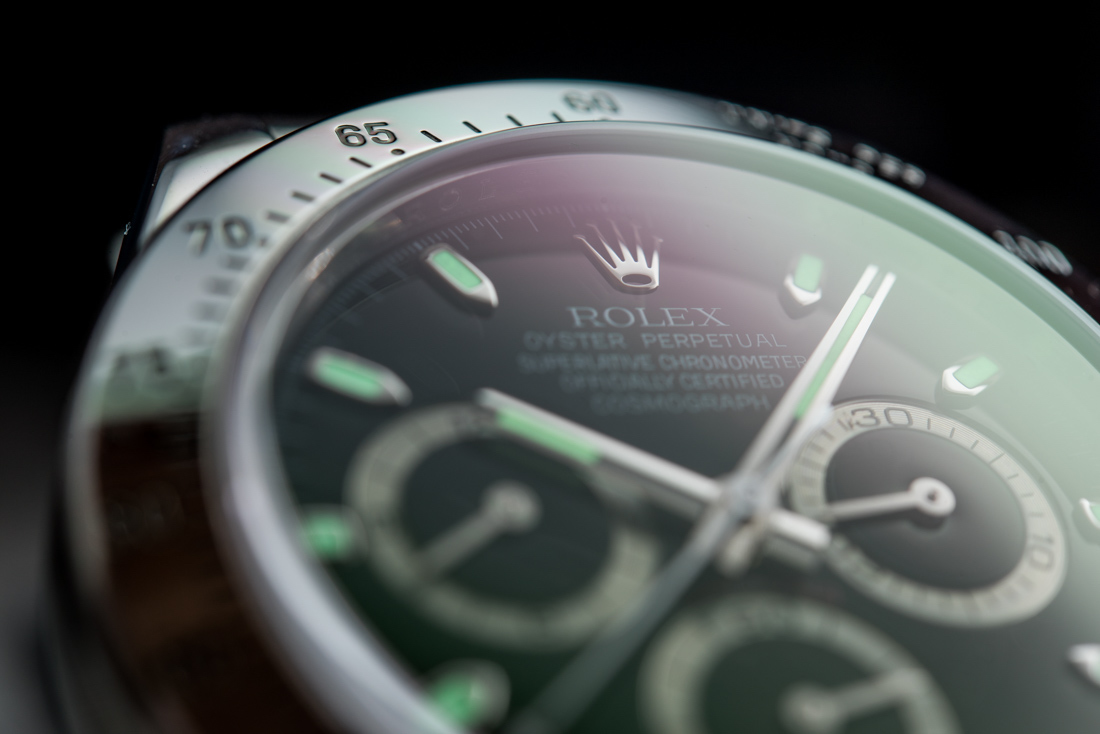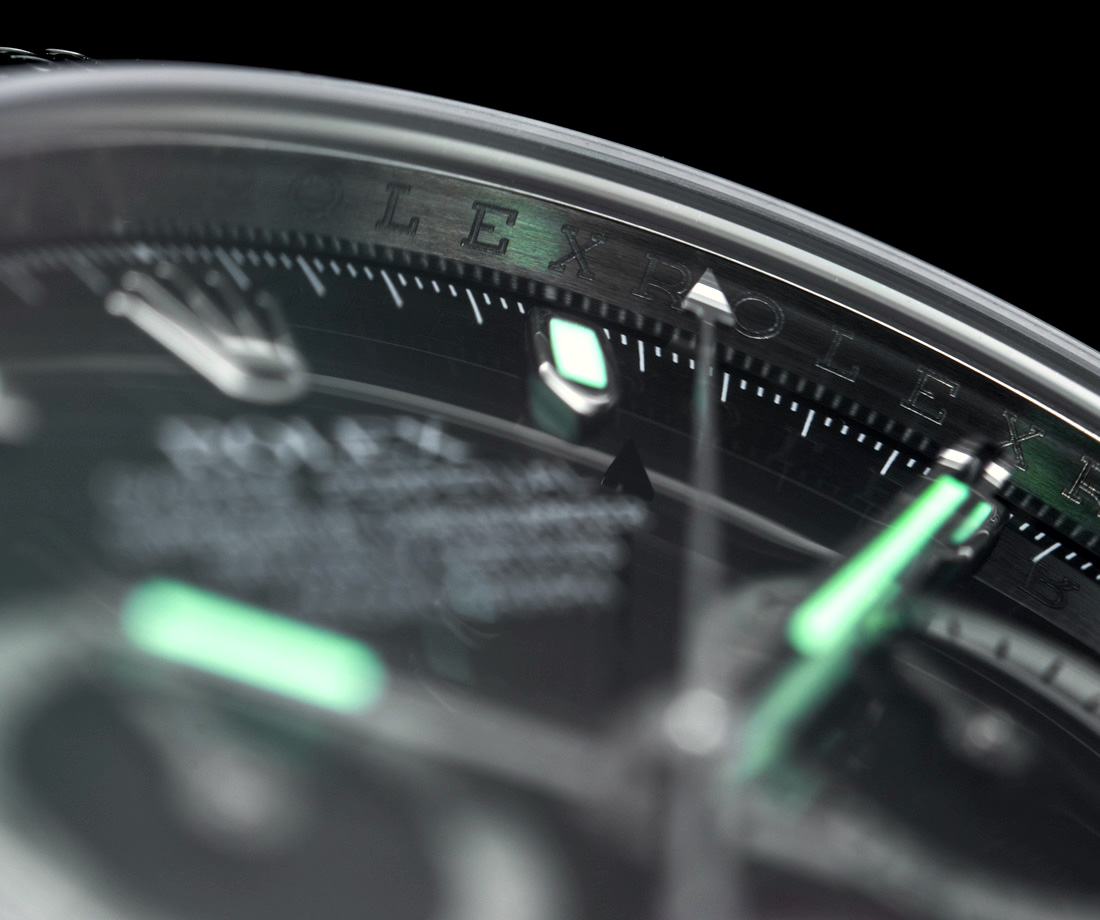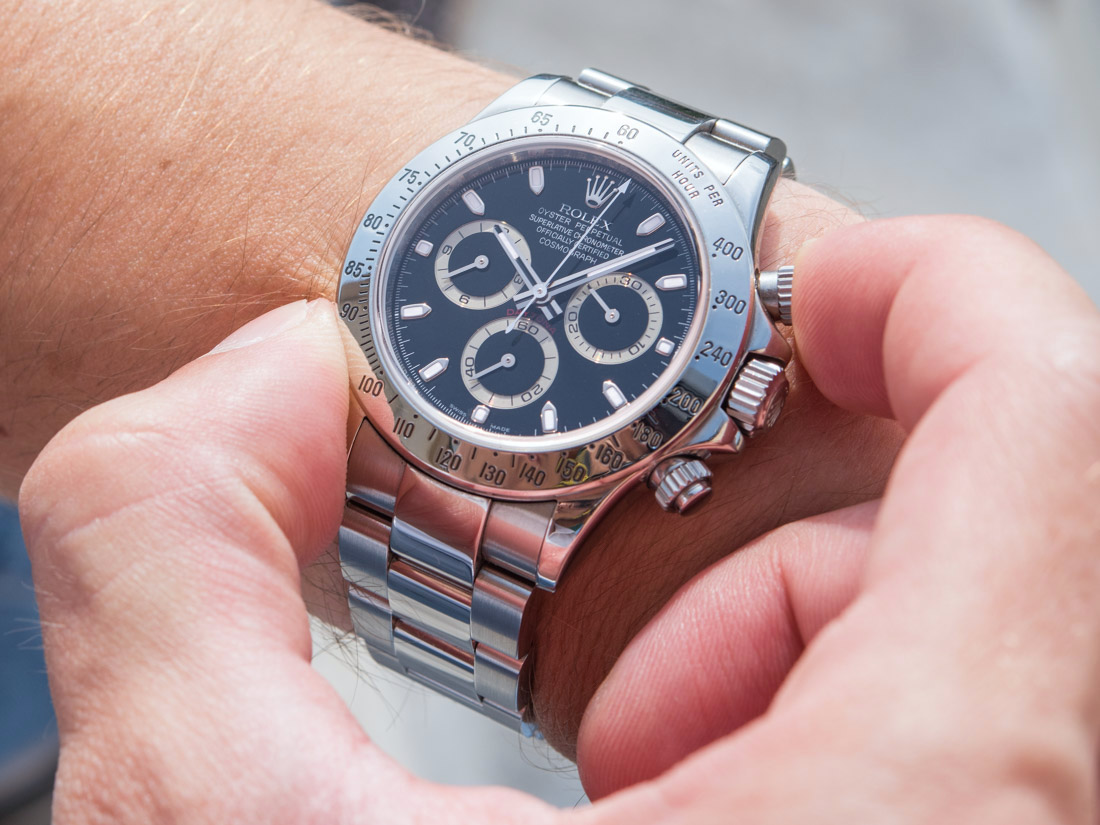
Wearability
At 40mm wide, around 47mm lug-to-lug and just 12.2mm thick, the Rolex Daytona 116520 comes as a compact package. Most impressive is its thinness: at the moment I cannot think of another automatic chronograph with a vertical clutch that is as thin as the Daytona equipped with its 4130 caliber. This noted, it has to be said that the lack of a second timezone or a date indication helps shave off important millimeters, but even so, there are many non-chronograph watches out there these days that appear considerably chunkier on the wrist than the 116520.
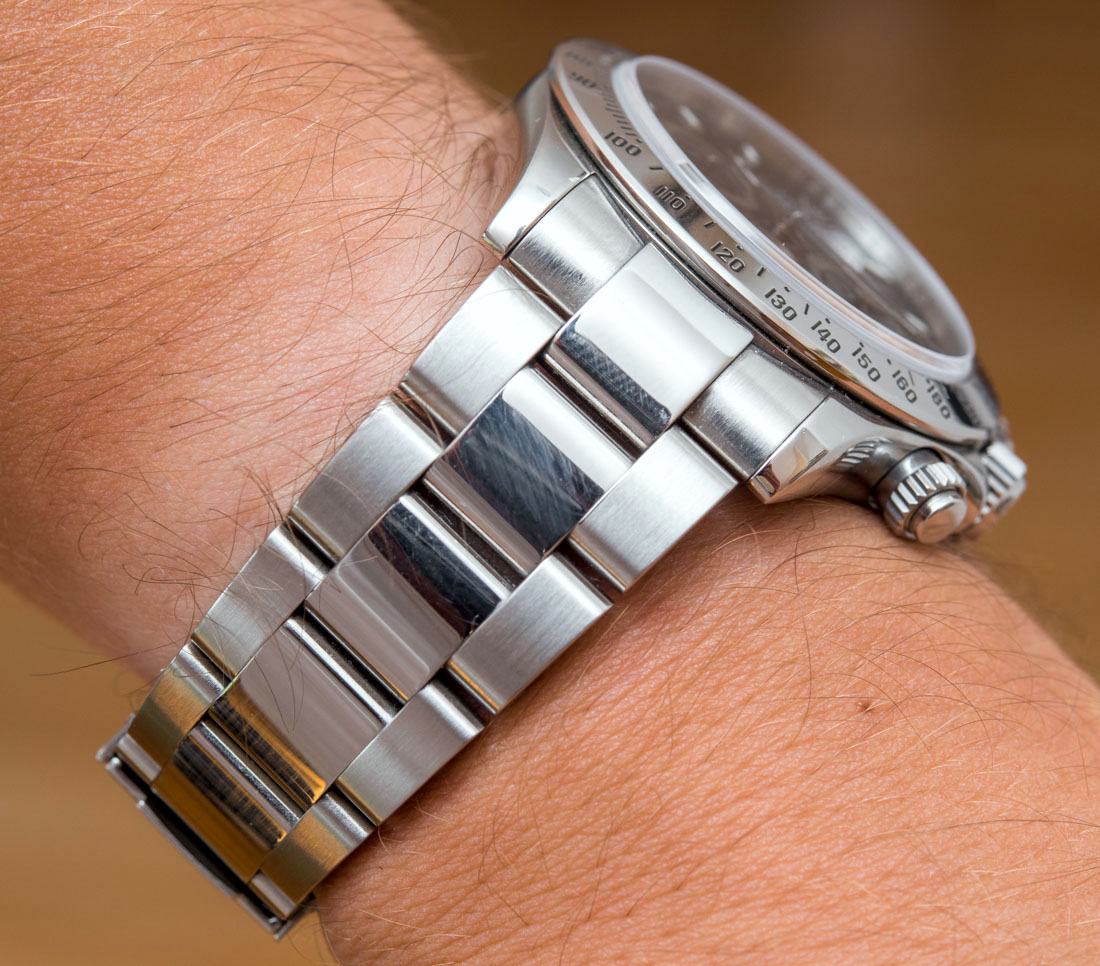
The Daytona is one impressively thin chronograph – even noting its lack of a date, GMT or power reserve.
The steel Daytona comes exclusively on the three-link Oyster bracelet – of course also in steel. Matched with the Daytona’s flat case and medium-long lugs, I learned that I had to pay more attention to getting the bracelet sized exactly right – if I wore it just a bit loose, as I wear all my other watches on a bracelet, the Daytona would slip to the top or bottom of my wrist and would have a hard time staying in the center. Removing a link solved the issue, but, again, this isn’t something I’ve experienced with other steel bracelet watches so far. Just make sure you get the sizing right.
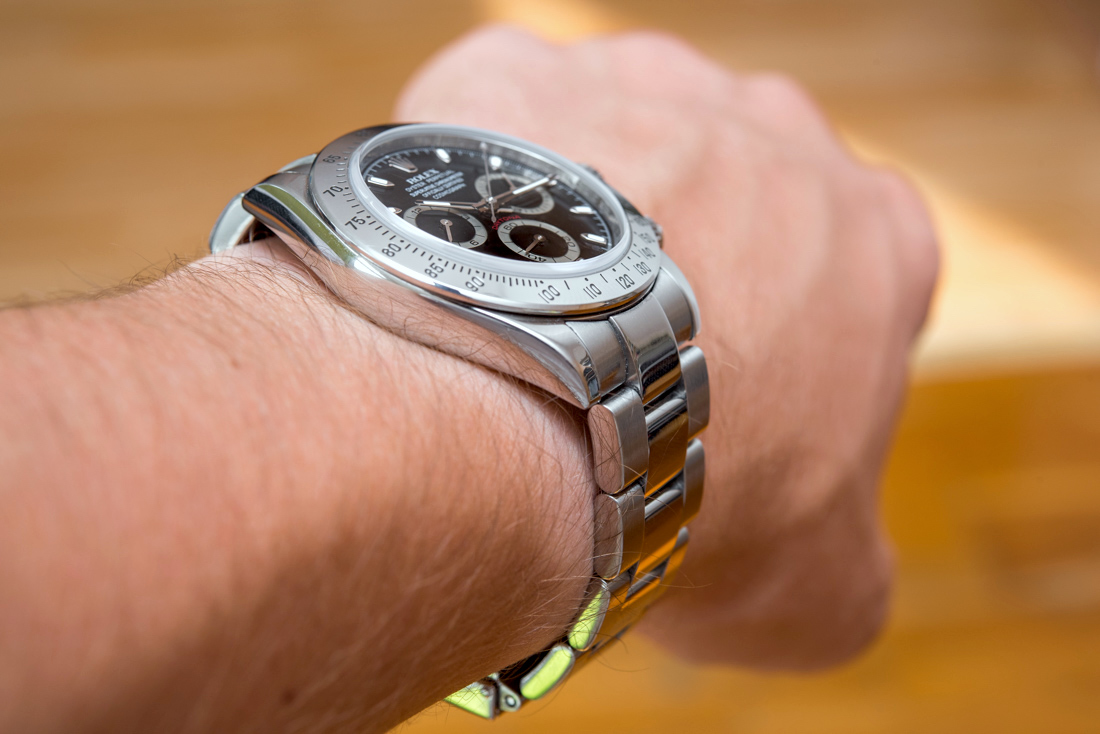
The long clasp also creates an area under the wrist where there is a lot of rather unsightly gap between it and the wrist unless you get the sizing a bit tighter than usual. Once you get spoiled by the fantastic fit of the Jubilee bracelet, these things begin to stand out. A nice feature (the like of which every single watch sold for over, say, $2k should have) is the “Easylink” comfort extension link that you can pop out to add right around 5mm to the bracelet.
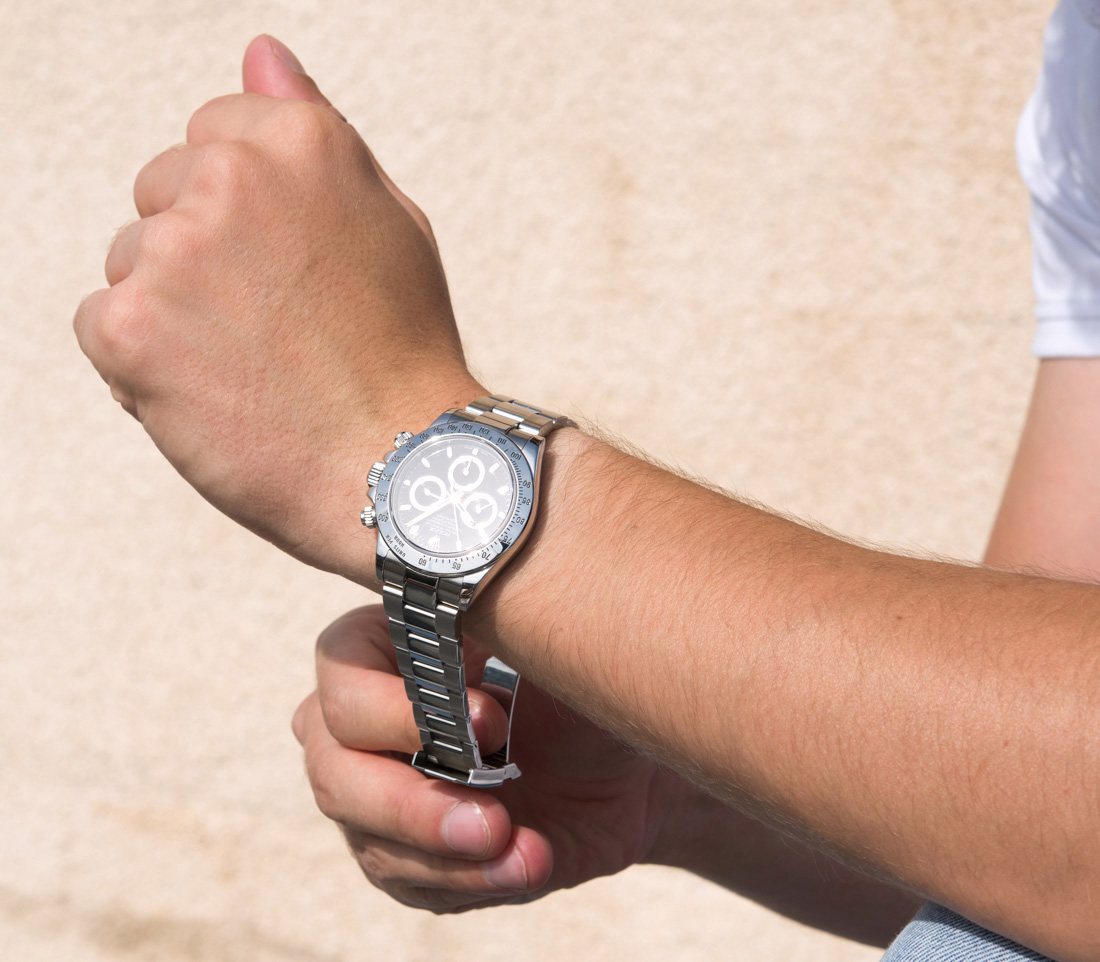
This cannot be adjusted, the additional segment is either folded out or locked back into the clasp – but for daily wear, this extra bit is perfectly sufficient. This noted, frankly, I don’t really understand why Rolex uses a different system from the Submariner’s “Glidelock” system that allows for incremental adjustments – the Daytona’s clasp is shorter than that of the Submariner, but a shorter Glidelock would still be preferable.
The Rolex 4130 Caliber
This is one incredible caliber, that is for sure. Rolex hardly ever advertises the fact that this is one of the lowest component count automatic chronograph calibers on the market these days – with just 201 parts in total, there are 3-hand automatic movements out there with more parts than this. Rolex achieved this by designing a chronograph mechanism that requires about 60% fewer parts than regular column wheel chronographs. When compared to the El Primero-based 4030, the 4130 has just 12 different screws and not over 40. Its mainspring can be replaced without taking the movement out of the case, and the automatic winding mechanism is nearly 70% more efficient compared to the previous caliber.
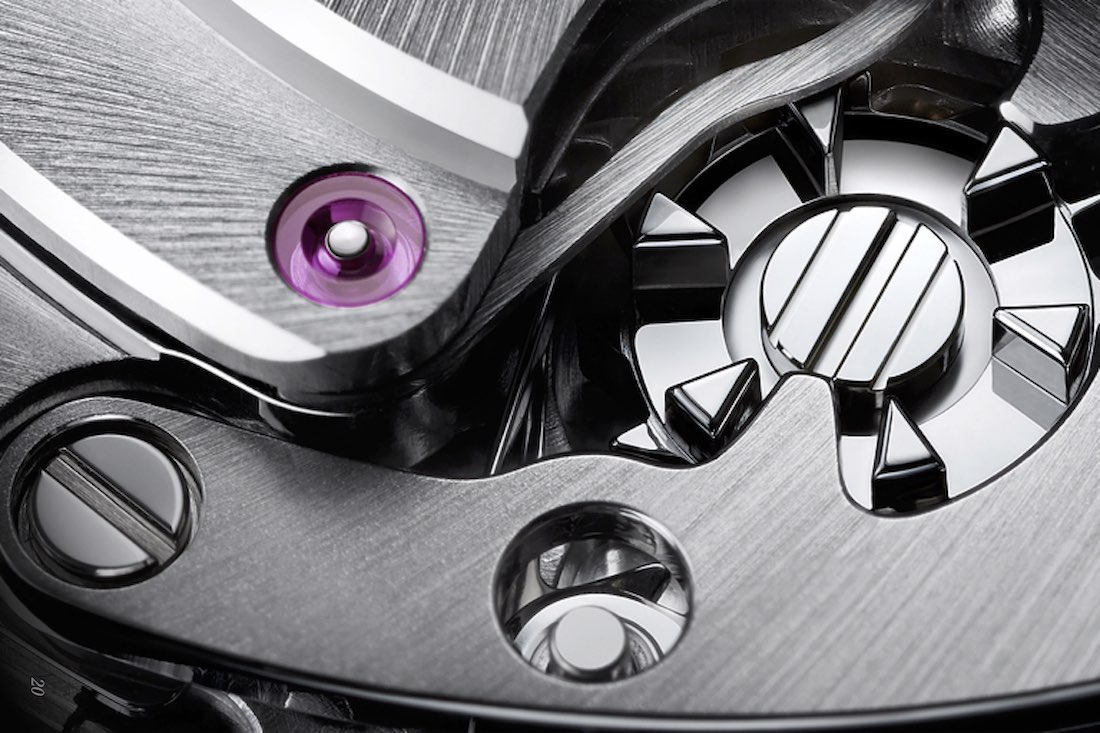
Beyond all these achievements, the high-tech goodies are all also present. A vertical clutch guarantees a jump-free initiation of the chronograph seconds, while the column wheel ensures that the pusher feedback gives you not a hint about the ingeniously low amount of components that react to your input.
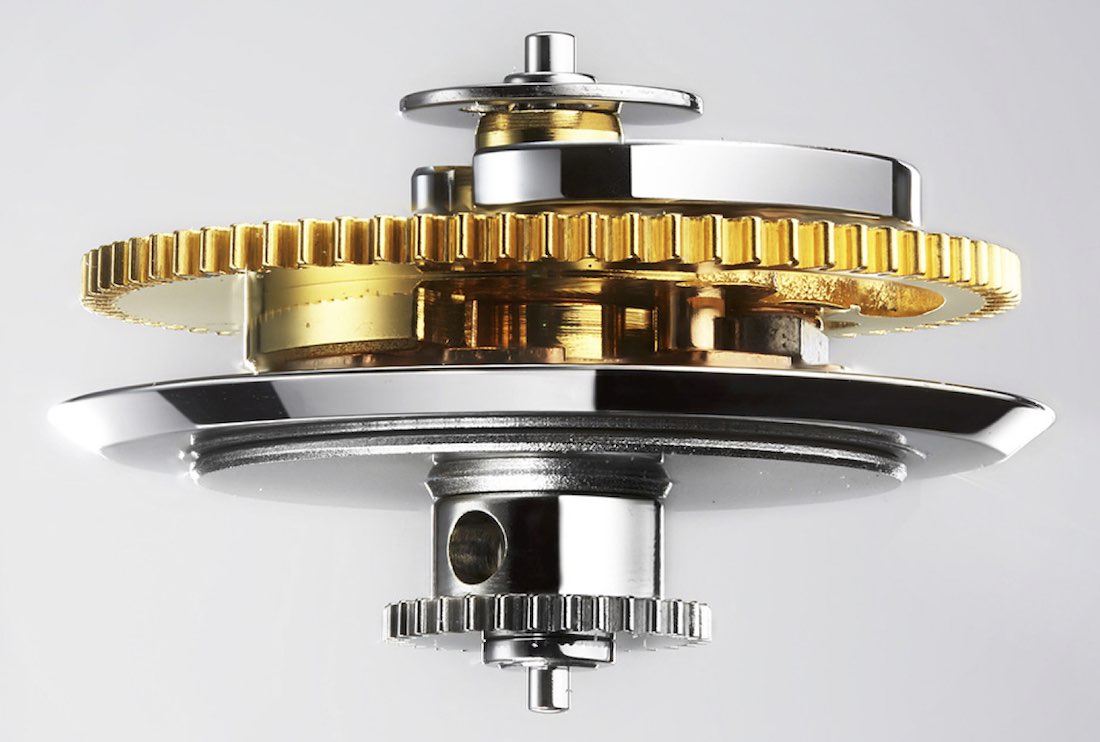
Rare images of the 4130’s high-tech components: further above the column wheel, just above the vertical clutch.
We have discussed vertical clutches many, many times but for the sake of this review we’ll give a brief run-down on it again. The vertical clutch is located in the dead center of the movement and its role is to couple and de-couple the chronograph mechanism from the drive that comes from the movement. Its descriptively called a vertical clutch because it relies on friction created and interrupted between vertically arranged components. In traditional chronographs, two horizontally arranged wheels are coupled and de-coupled and since the teeth of one constantly rotating and one stationary wheel are meeting for the drive to be transmitted, you have a less accurate interaction between parts and hence a less sound start to the chronograph.
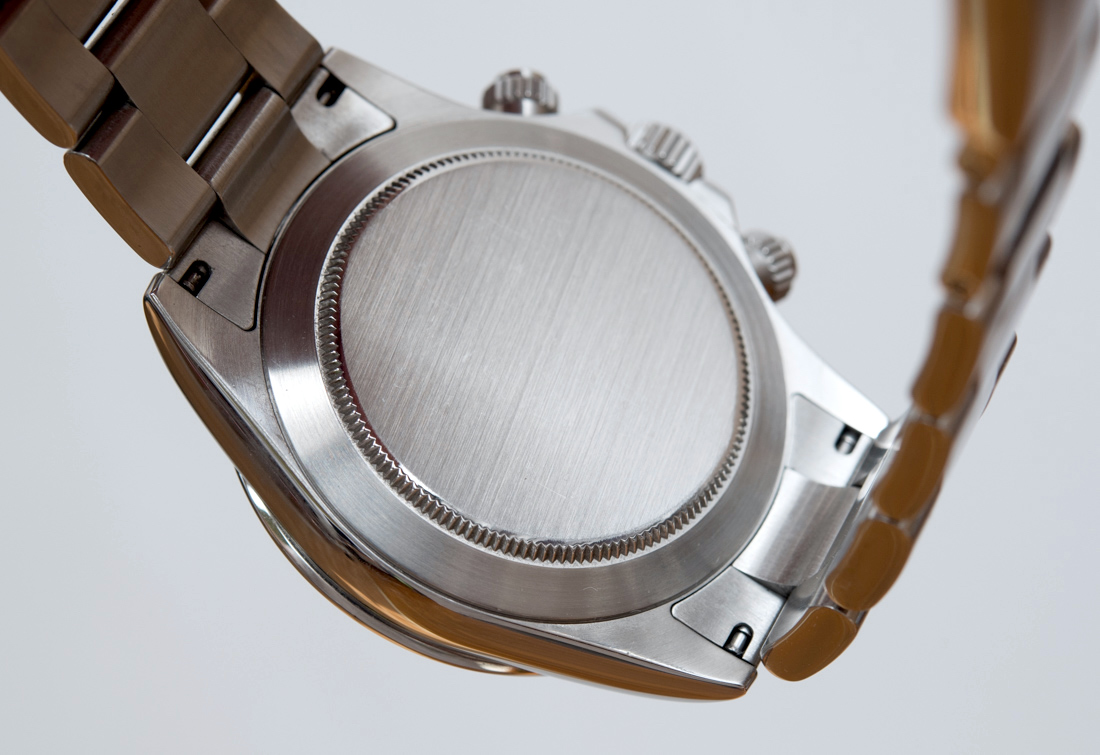
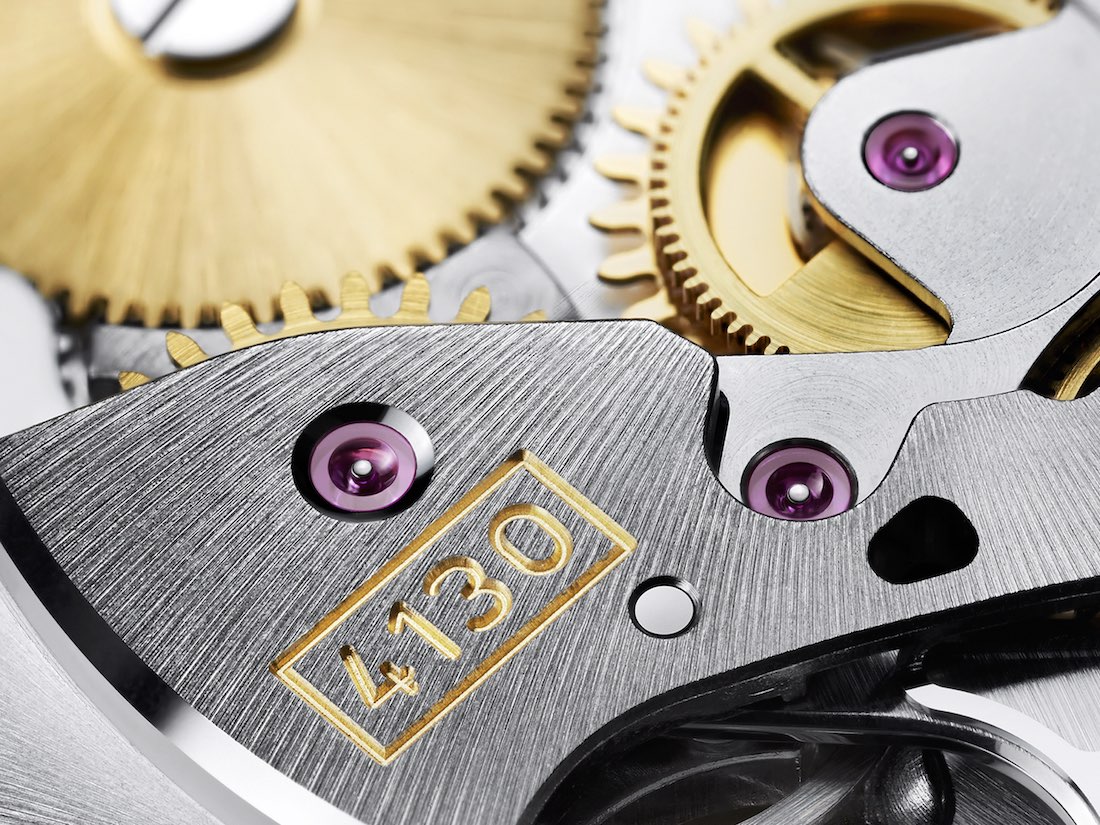
The Rolex 4130 caliber would certainly offer enough eye-candy to merit a see-through case-back. Second image source: Rolex
The Rolex 4130 caliber runs at a frequency of 4Hz and yet provides 72 hours of power reserve. It also complies with Rolex’s recently updated in-house tested requirements of a daily accuracy between -2 and +2 seconds. These, added together, render the 4130 a perfectly modern and highly competitive chronograph caliber. I do very much wish we could see it – and if I were to own a Daytona, you bet I would pick up an aftermarket (water resistant) sapphire see-through case-back. Come to think of it, I wonder why not more people do that.
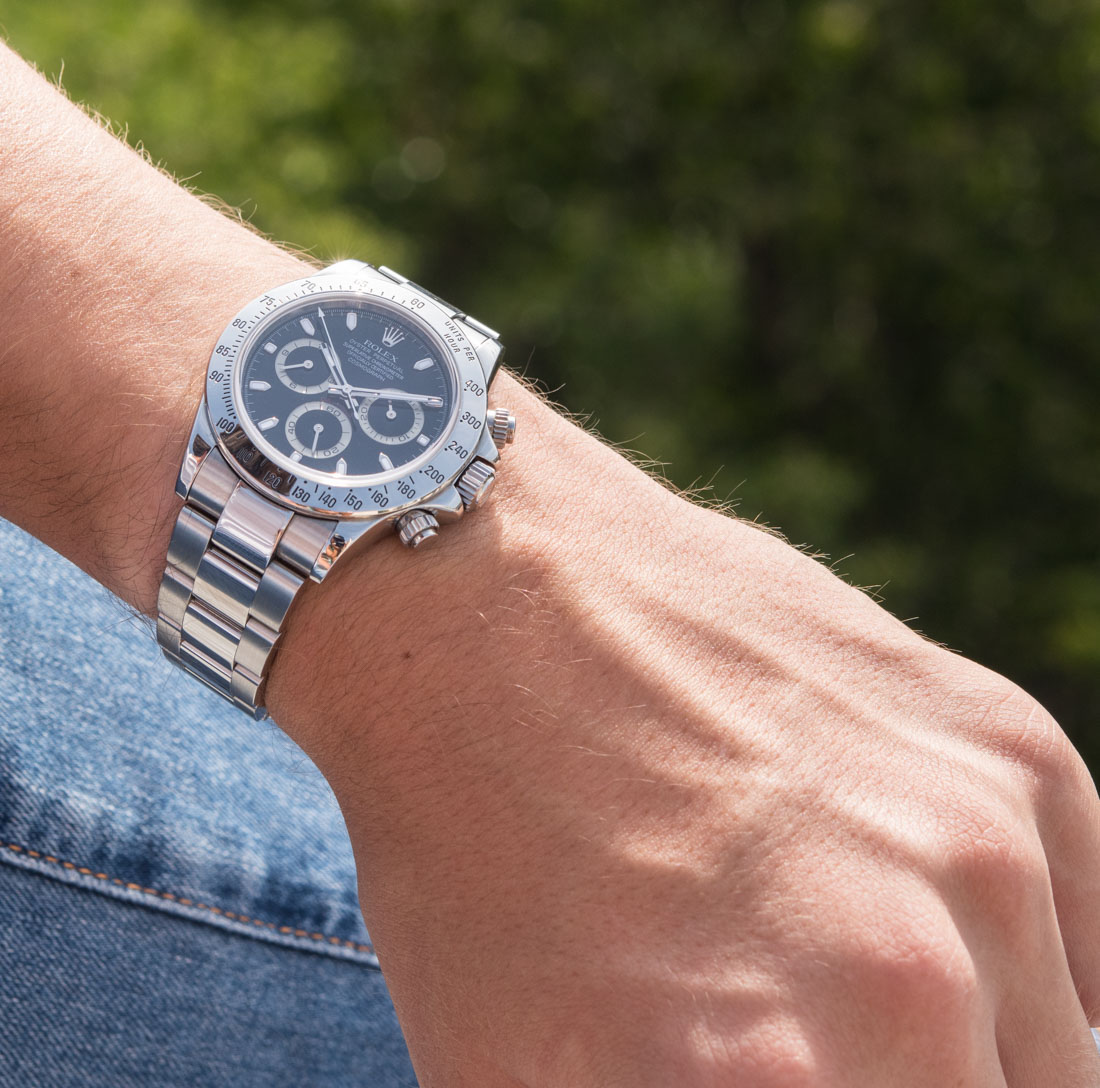
Summary
I am ready to admit that I have been on a nit-picking run in this review of the steel Rolex Daytona 116520, so let me tell you why that is: it’s because I want to like this Daytona more than I actually do. When Rolex decides to flex its muscles a bit, it can create something that will take years, if not a decade or more for the competition to catch up with. Even today, the 17-year-old 4130 blasts most all other automatic chronograph calibers cold out of the water in terms of sheer performance (power reserve and accuracy) as well as serviceability – with just Omega breathing down their neck with their Master Co-Axial 9900… and the incomparably more niche Grand Seiko with their Spring Drive chronograph.
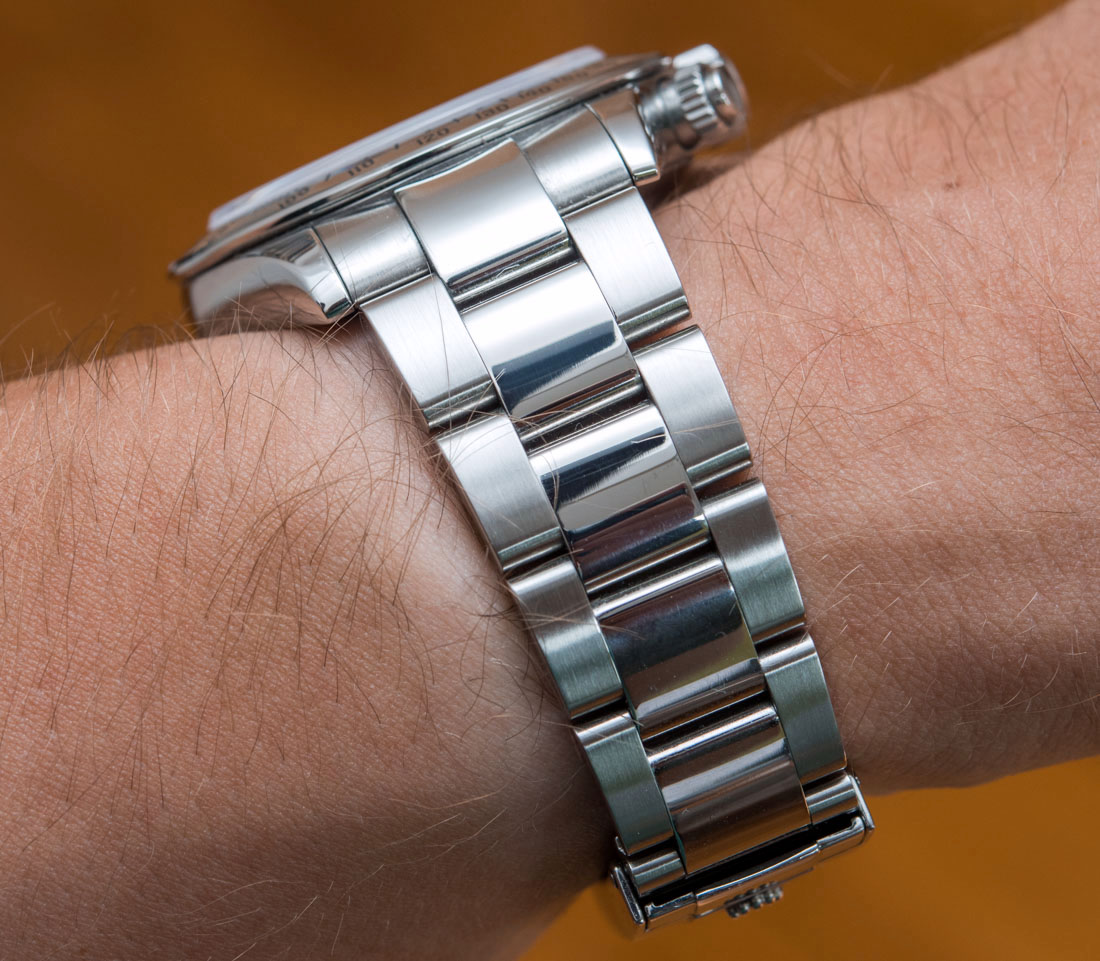
The contrast between Rolex’s incredible engineering prowess and little but notable annoyances like a smudge-city, highly reflective crystal, less than optimal legibility, and at-times dated execution of little details like the bezel and handset is what made me unable to “unsee” these nuances.
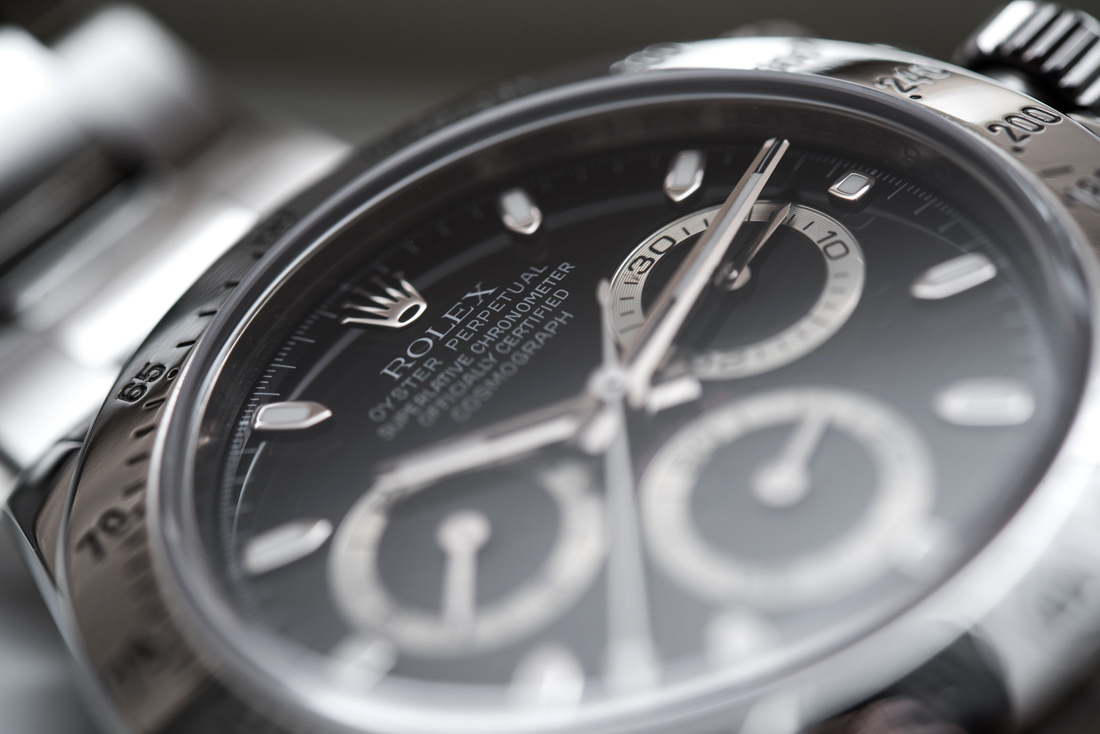
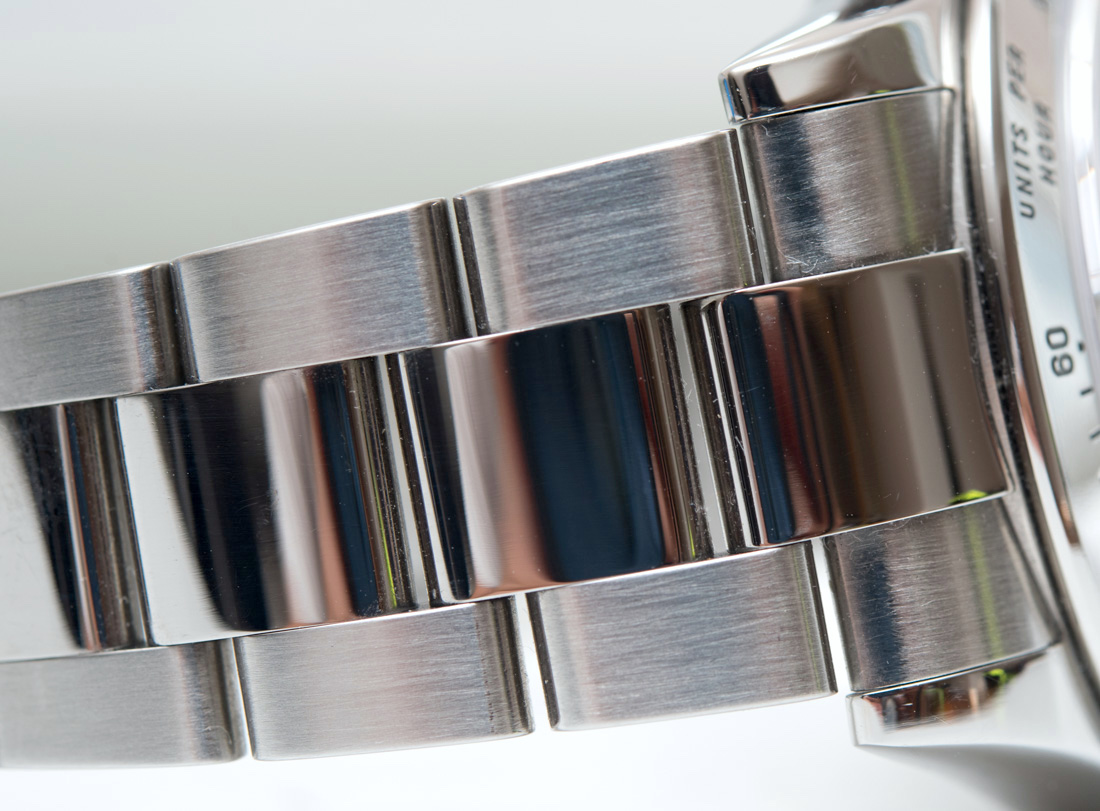
We have been seeing the $10k market get extremely competitive in recent past – and even if that wasn’t the case, year after year I would still wish to see Rolex venture into new territories, and carefully but noticeably embrace new materials and technologies like it had done before. And though it may have taken 10-15 years for a select few in chance to compete with Rolex to get their act together, I hope and wish to see Rolex show us what their leap into the next 10-15 years of dominance looks like – and I want to think it will be more than a ceramic bezel.
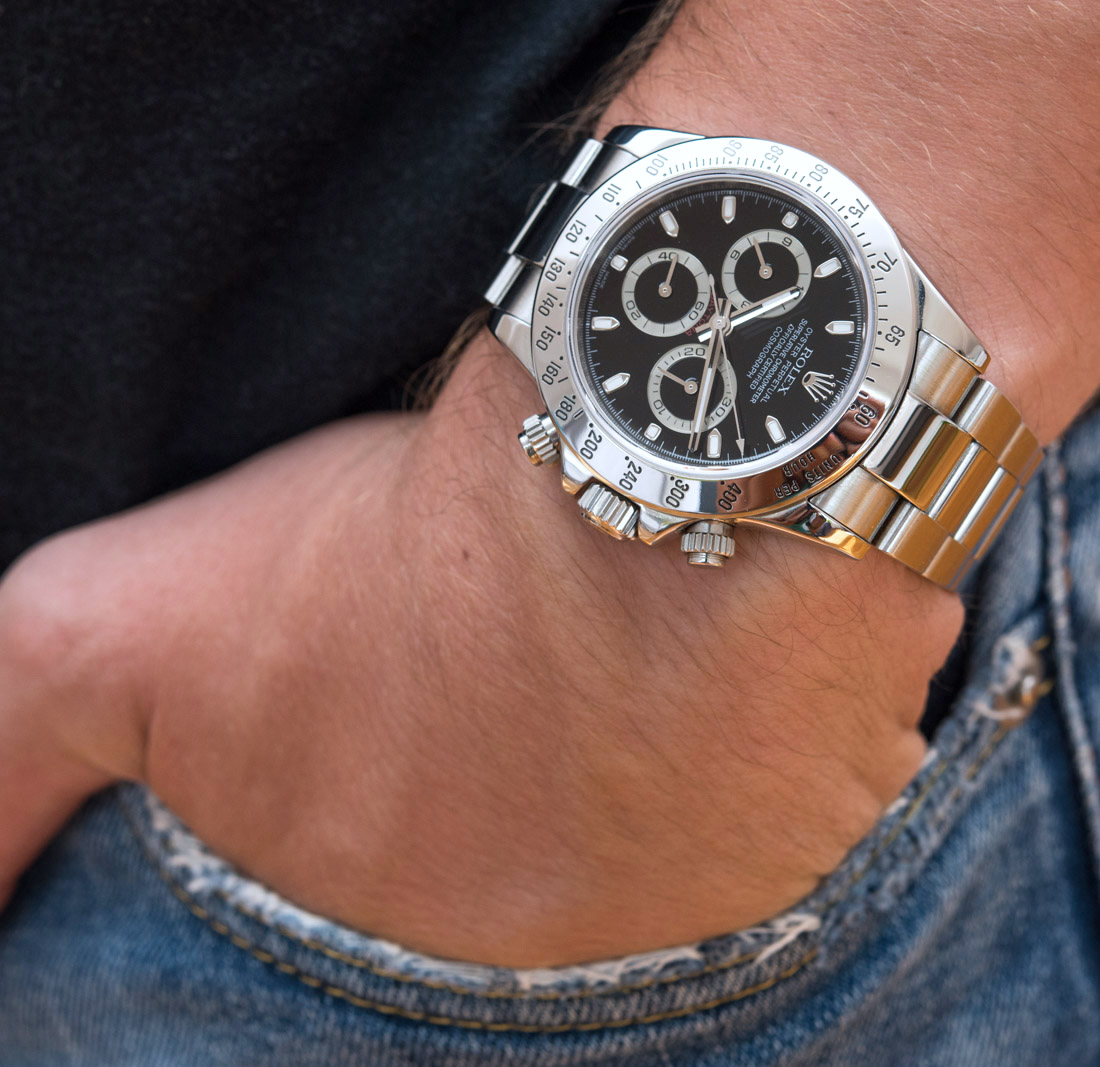
All this noted, the Rolex Daytona 116520 is a true classic and one that will look good forever – and some more after that. Its overall wearability and functionality both as a luxury chronograph and a luxury accessory is solid, but its ubiquity and lack of easy-to-attain exciting features expose it to the competition now more than ever.
The last retail price for the Rolex Daytona 116520 in steel in the US was $12,000. rolex.com
Necessary Data
>Brand: Rolex
>Model: Daytona 116520
>Price: $12,000
>Size: 40mm wide
>Would reviewer personally wear it: Sometimes.
>Friend we’d recommend it to first: The one looking for a Rolex Daytona. I imagine a prospective Daytona buyer finds out on his/her own that he wants one, not through a friend’s recommendation.
>Best characteristic of watch: Iconic and easily recognized design that works well in a wide range of situations. Fantastic movement, comfortable wear.
>Worst characteristic of watch: Little issues that need fixing: smudgy and reflective crystal, at times problematic legibility, dated execution of a few details.

